January 19, 2021
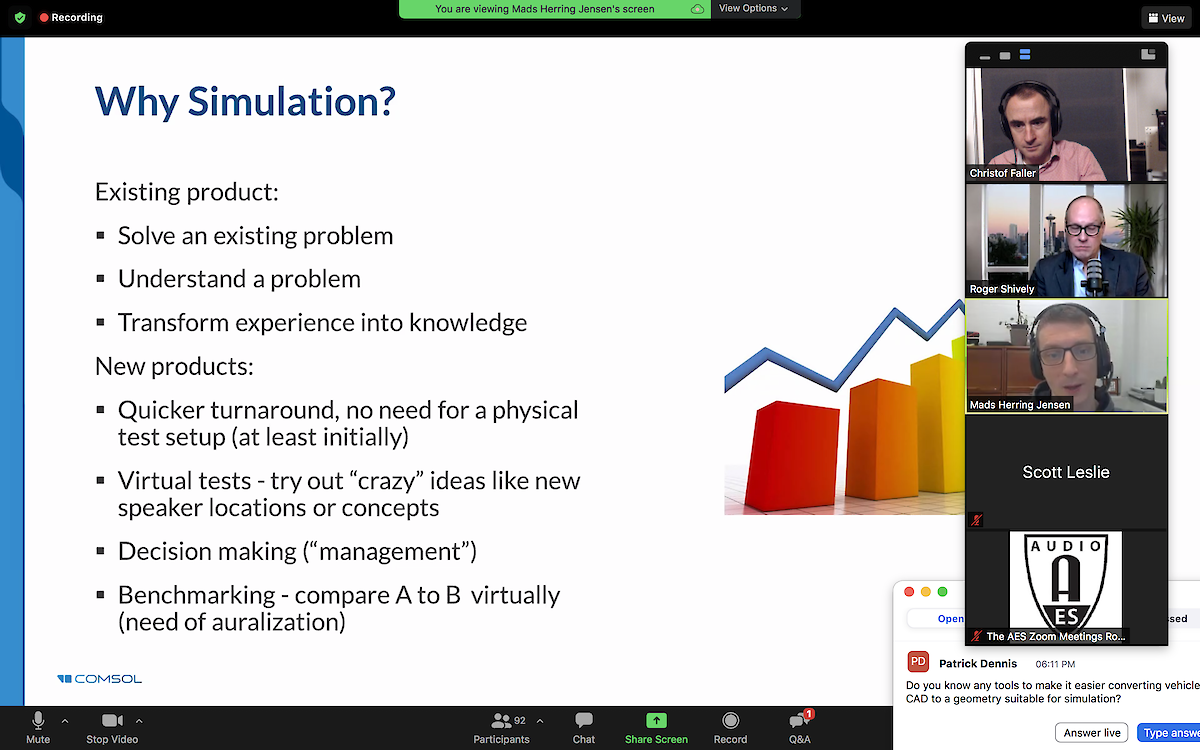
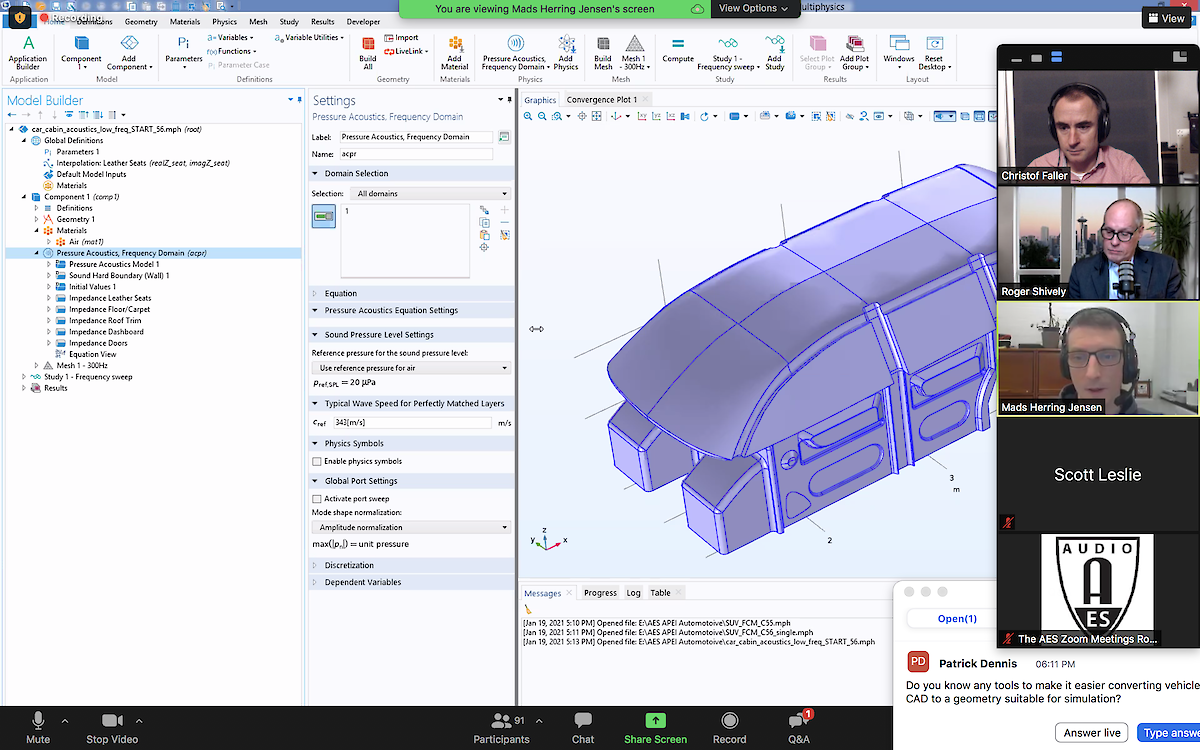
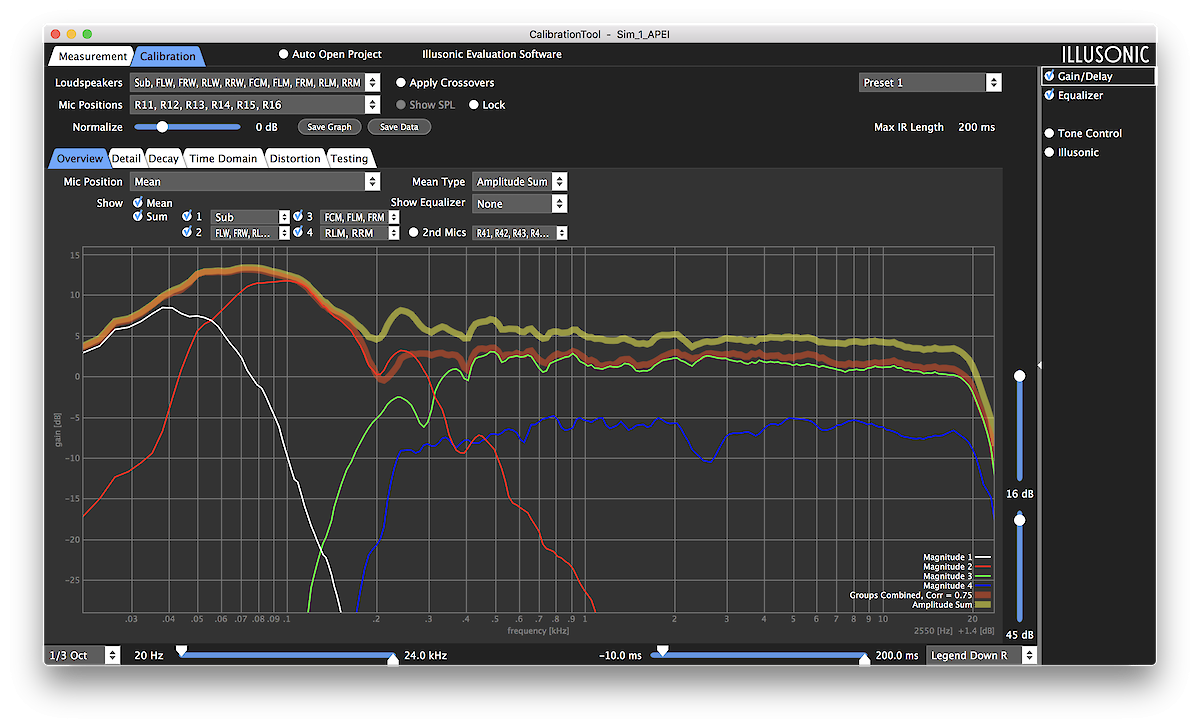
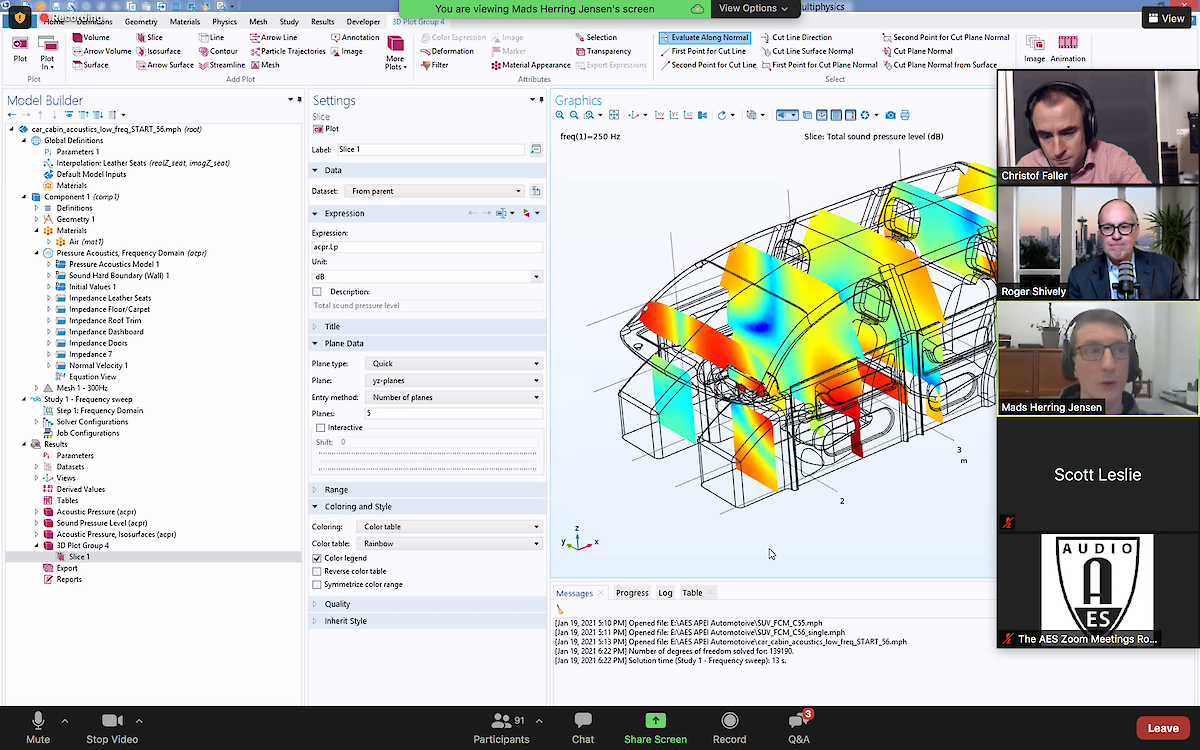
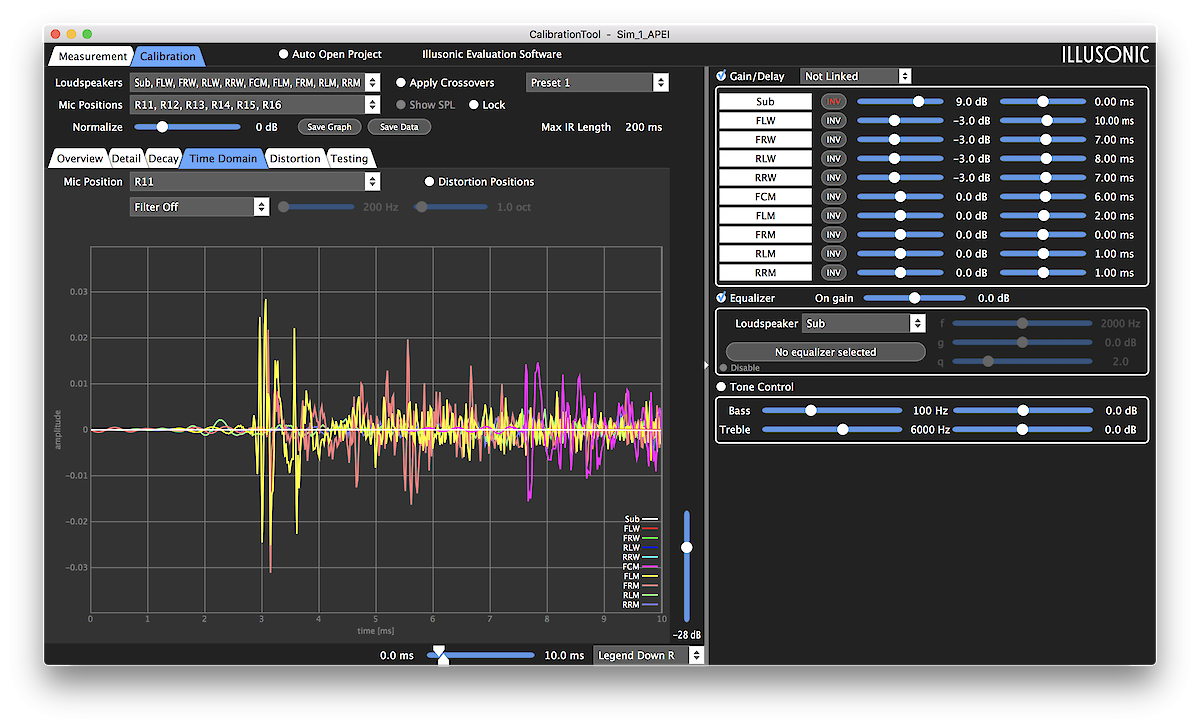
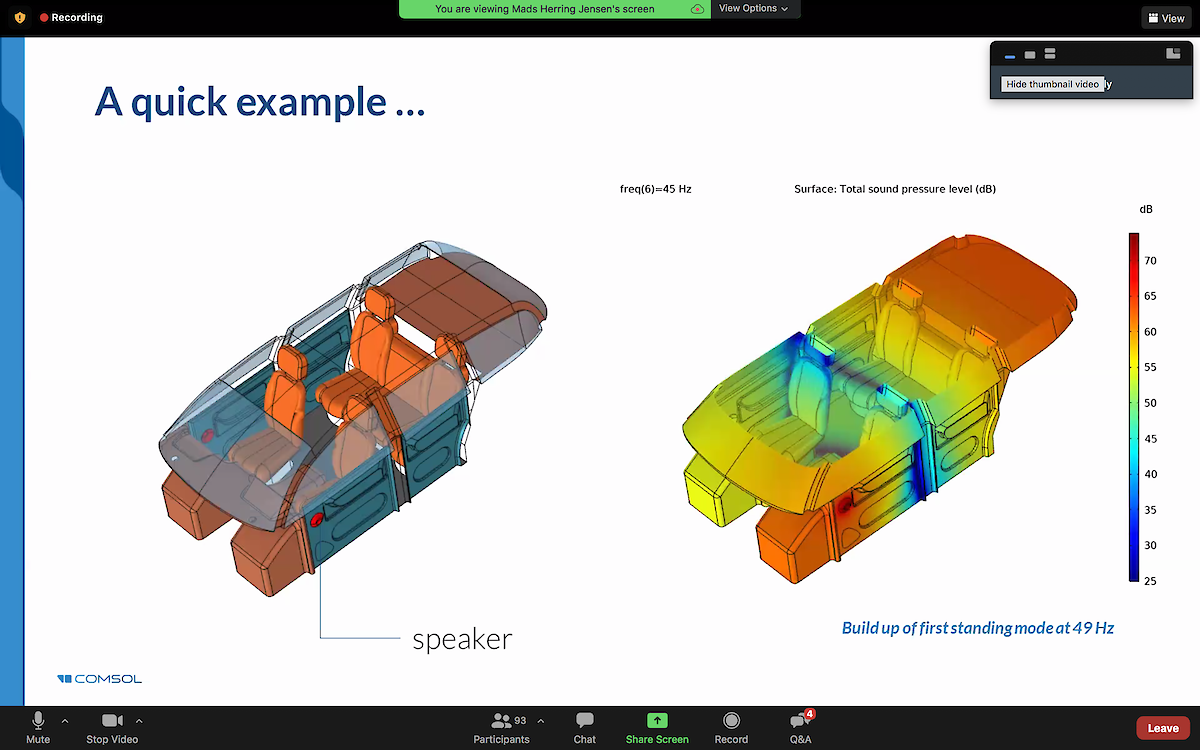
APEI: COMSOL & Illusonic
APEI Webinar - Acoustic Results for Automotive Cabin Simulations


January 19, 2021






APEI Webinar - Acoustic Results for Automotive Cabin Simulations
https://audioproducteducationinstitute.org/ (video available)
January 19, 2021
9:00 AM Pacific (12:00 PM Eastern)
This event has been presented by Roger Shively (JJR Acoustics, LLC) APEI’s Automotive Pillar Chair. Following opening remarks, the event features two presentations from Mads Herring Jensen (Technical Product Manager, Acoustics, COMSOL), and Christof Faller (Managing Director, Illusonic GmbH), exploring simulation, visualization, tuning, and auralization topics.
Session 1: Modeling Strategies and Techniques in Car Cabin Acoustics (Mads Herring Jensen)
Simulation and virtual models plays an important role in the integration of sound systems into the car cabin environment as well as their calibration. This session looks at various modeling approaches and techniques used when assessing these systems. The low to mid frequency behavior is captured with a full wave models, while the high frequency behavior is typically captured with ray acoustics techniques. Emergence of new numerical methods and improved hardware shifts the frequency at which ray techniques are applied. The presentation also discusses boundary conditions as well as source characterization.
Session 2: Visualizing, Tuning, and Auralizing Car Cabin Simulation Results (Christof Faller)
A useful method for visualizing the results from an FEA or Ray Tracing models is discussed. Impulse response information is taken directly from a simulation model or generated from amplitude and phase result and imported into an Illusonic tool for reviewing time and frequency data for each point in the results file. For automotive, the number of results point could be microphones set in an array for each listening position. The results data can be grouped for review and comparison to measured data for the purpose of model updates. They can also be grouped and averaged for a virtual equalization as well as auralization. This process will be reviewed and demonstrated.
( Source of most of this text: https://audioproducteducationinstitute.org )


April 30, 2020
Christof Faller
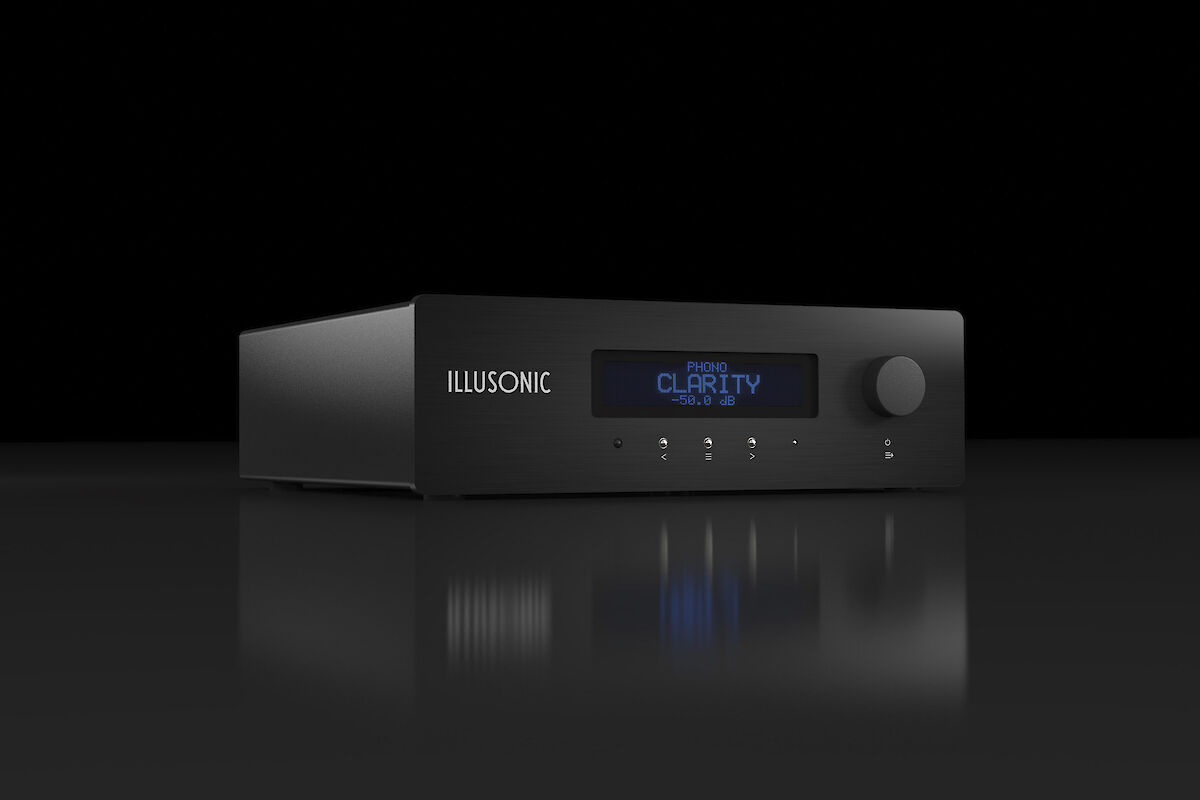
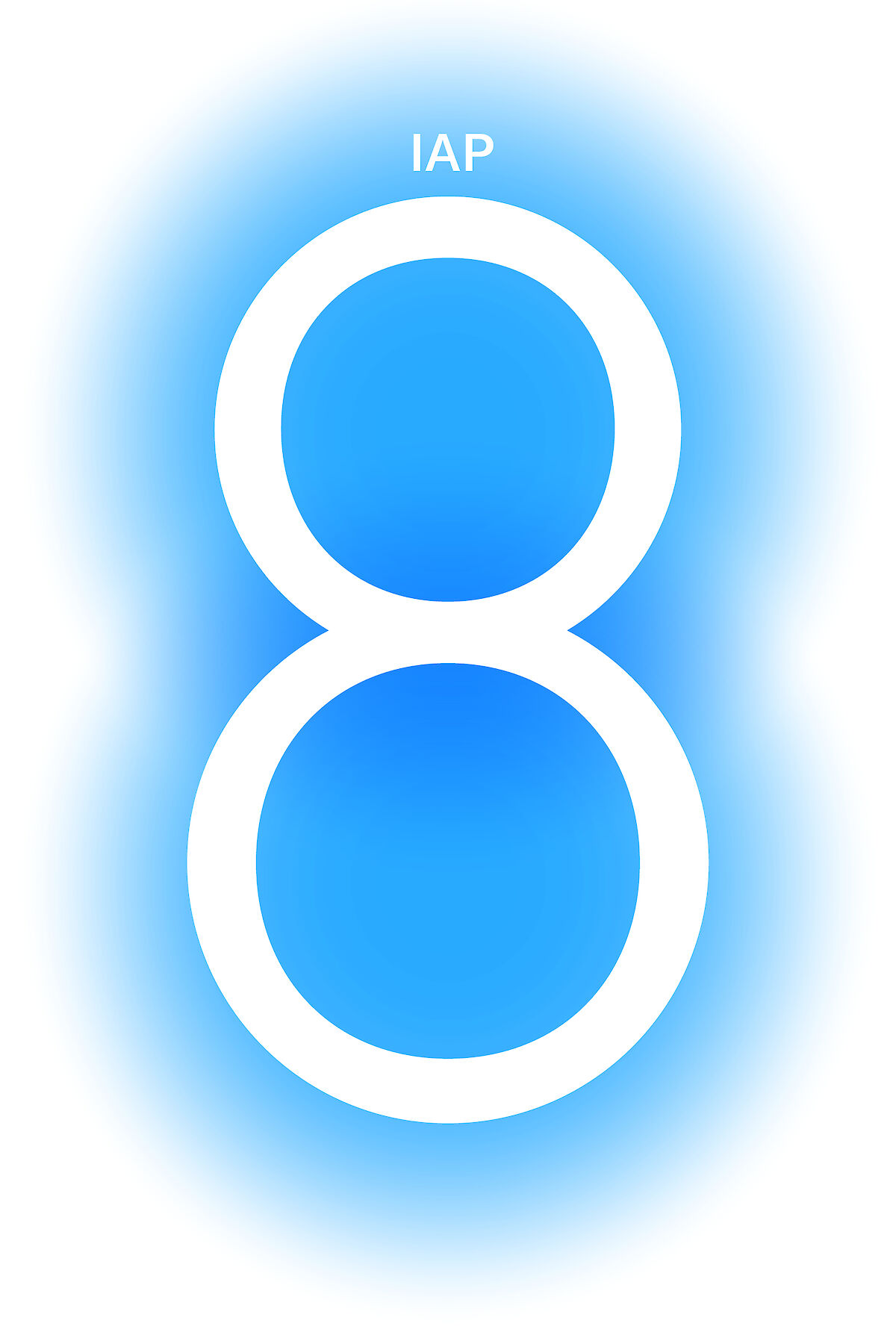
IAP Firmware/Software Version 8.0
So far, DSP-based room adaptation has been limited to spectral modification. Or, in special cases, advanced room optimizers can reduce effect of earliest reflections, but limited strictly to a small sweet spot.
Illusonic Clarity 3 is an entirely new approach to room adaptation. It reduces reverberance of a room as if more absorbers were installed. Not only in a small sweet spot, but in the whole room. Bass is getting dryer and sound is getting more precise also at high frequencies. This is not only a marketing story. For the technically inclined, we have published an open access research paper on it.
All IAPs ever sold (since 2012) support this update. That’s what we call a time-less high-tech high-end product. Very rare species.
You can download this free-of-charge update here. All your IAP settings are maintained. Right away listen with improved quality after update. Get back to us for enabling measurement-tuned Clarity 3.
Besides revolutionary progress, IAP 8.0 features many other innovations and refinements:
improved remote-tuning, we can listen to your system realistically with headphones with headtracking
“talking display” makes IAP friends with blind people
Immersive greatly improved again
improved precision on many DSP parameters (delay is now sample accurate, …)
iOS remote control app support (via Raspberry PI)
improved multi-room and multi-zone support
improved automation over RS232 and network (via Raspberry PI)
see change-logs below for the many more refinements
Change-Logs (compared to previous latest version 7.1.3)
IAP Firmware & DSP:
Add Clarity 3 with Clarity Tuning
Improved Clarity without tuning (parameters, time-smoothing)
Improved Immersion (new decorrelator & reverb modules, randomization, pre-post processing)
Improved and renamed Immersion High and Size (to Tilt and RT60)
Added “Dry Center” option, to keep dialogue in stereo-movies dry (Depth and Immersion not acting on center and phantom center)
Added (USB) remote control commands for Ad Hoc Settings (balance, subsonic, sub gain, center gain, room mute, room gain)
Multi-room/zones improvements: room mute/gains are now stored permanently, added configurable room name, room mute: prevent that menu is entered unintentionally, during measurement now ignore room mute and room gain
Adhoc Center/Sub Gain: increased resolution from 0.5 to 0.1 dB
Bass/Treble Gain: increased resolution from 0.5 to 0.1 dB
Output Gain Trim range: increased from [-12..12] to [-20..20]
Output Delay Trim resolution: increased from 0.1 to 0.01 ms
EQ gain range: increased from [-18..6] to [-20..20] dB
Sub Overhead range: increased from [-10..20] to [-20..20] dB
Improved precision of all Illusonic algorithms by shifting operating range, such that the dynamic range of 32-bit float is more effectively used
Improved numerics on center extraction for better waveform quality
Added 3 new EQ types. IAP has now 27 different EQ types. The new filters are highpass with q-factor for raw bass driver equalization, and low/high shelving with q-factor for implementing smooth room curves with any slope
Increased Input Delay range to 0..200ms (from 0..100ms)
IAP Calibration control of IAP: all sound settings preset settings are now controlled by IAP Calibraiton (without overwriting any presets), previously only Gain/Delay, EQ, BMGT On/Off were controlled, this enables convenient listening and AB testing with now also Immersive
IAP Calibration control of IAP: “IAP CALIBRATION” is now shown on display while IAP Calibration controls IAP, and, except input and volume change, menus are disabled
Accessibility: added usb command to read out IAP display, updated iap library and iap_tool correspondingly
Improved reset command, such that no big clicks will be on loudspeakers (this happened when one would issue a firmware update without putting IAP to standby)
Improved microcontroller versioning, now pre-release versions are detected and user is prompted to update to final version
Phono in line-in mode now disables RIAA
Fixed input gain (was 2x in dB since IAP 7.1)
Analog-In now has always 20Hz low cut, to remove DC in input (on low levels this could freeze output-gain/volume, due to zero-crossing condition)
Fixed issue of temporary display freeze/corruption 1-2 seconds after IAP boot (with new network card)
IAP Configuration Software:
added Clarity 3 with Clarity Tuning
added Multiroom/Zones settings
added Ad Hoc settings (Balance, Center/Sub gain, etc.)
added support for 3 new eq types
increased input delay range to 200ms
IAP Calibration Software:
introduced dsp params presets, to quickly compare between any different settings
added new import config (.iap) function
added a new panel for Clarity 3 to tune it with measurement data
added Illusonic DSP along with gain/delay, eqs, etc. for real-time tuning
improved integration of Illusonic DSP with headphones auralization
added support for 3 new eq types
replaced phantom function with a more general sum function, to test phase consistency between loudspeakers
added “make mono” button to Auralization/Testing
added support for Bluetooth headtracking to Auralization
improved mean graph legends (now mean type is specified)
renamed Waterfall tab to Decay tab and increased number of range options
added correlation coefficient for crossover optimization
fixed bug, where tone control was not simulated when eq was off
fixed bug, where disable eq function did not work properly


December 3, 2019
Christof Faller
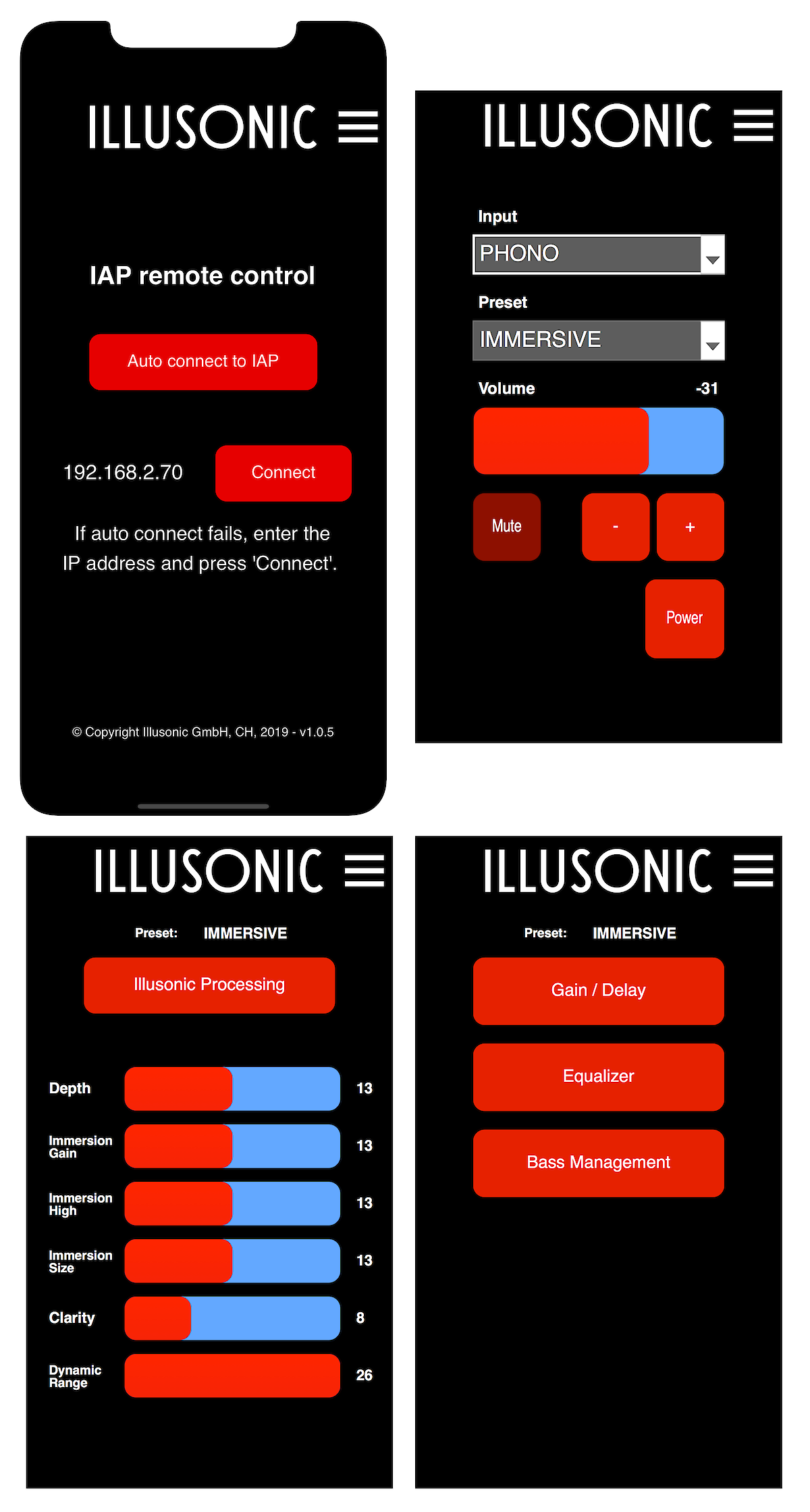
We just released our first iOS app on Apple’s App Store
IAP Control versatile remote control for our audio processors. Besides main controls (input select, volume, preset, mute), also detail sound settings can be changed. Changes done on IAP directly feed back to IAP Control.
https://apps.apple.com/us/app/iap-control/id1455969349?ls=1
The application is optimized for iPhones and iPads.


October 13, 2019
Christof Faller
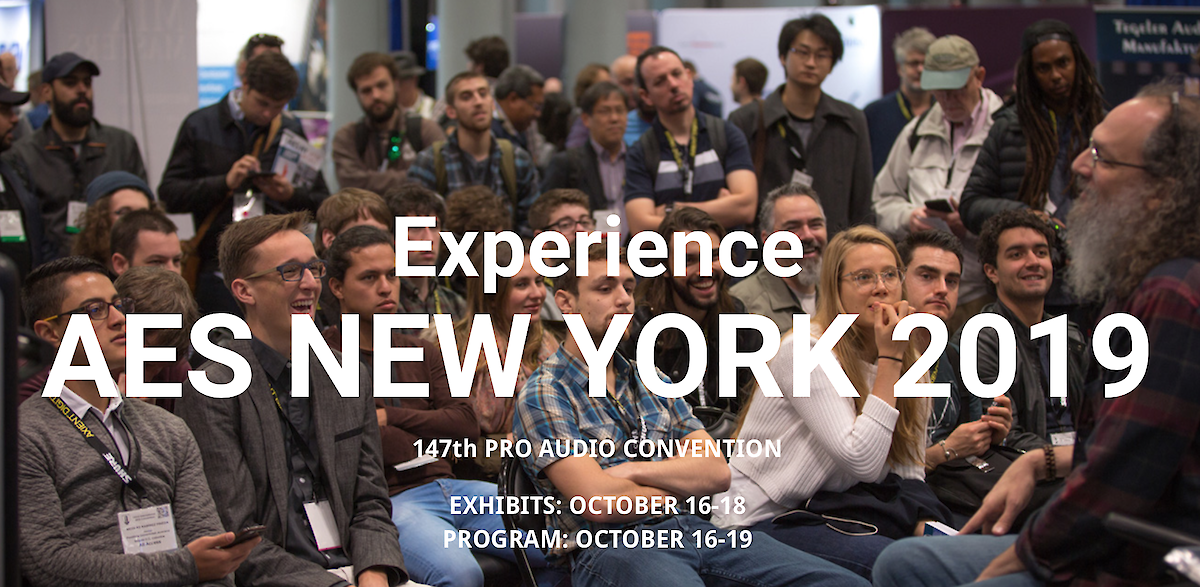
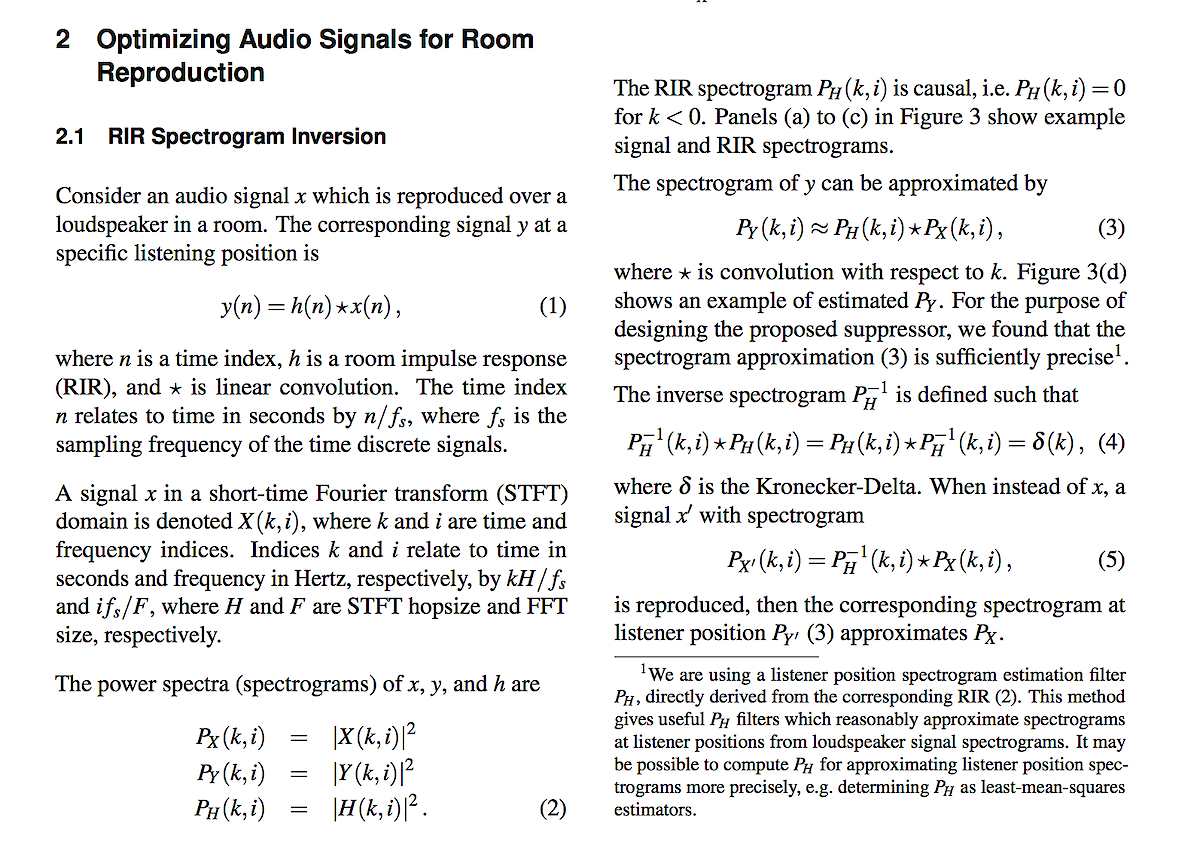
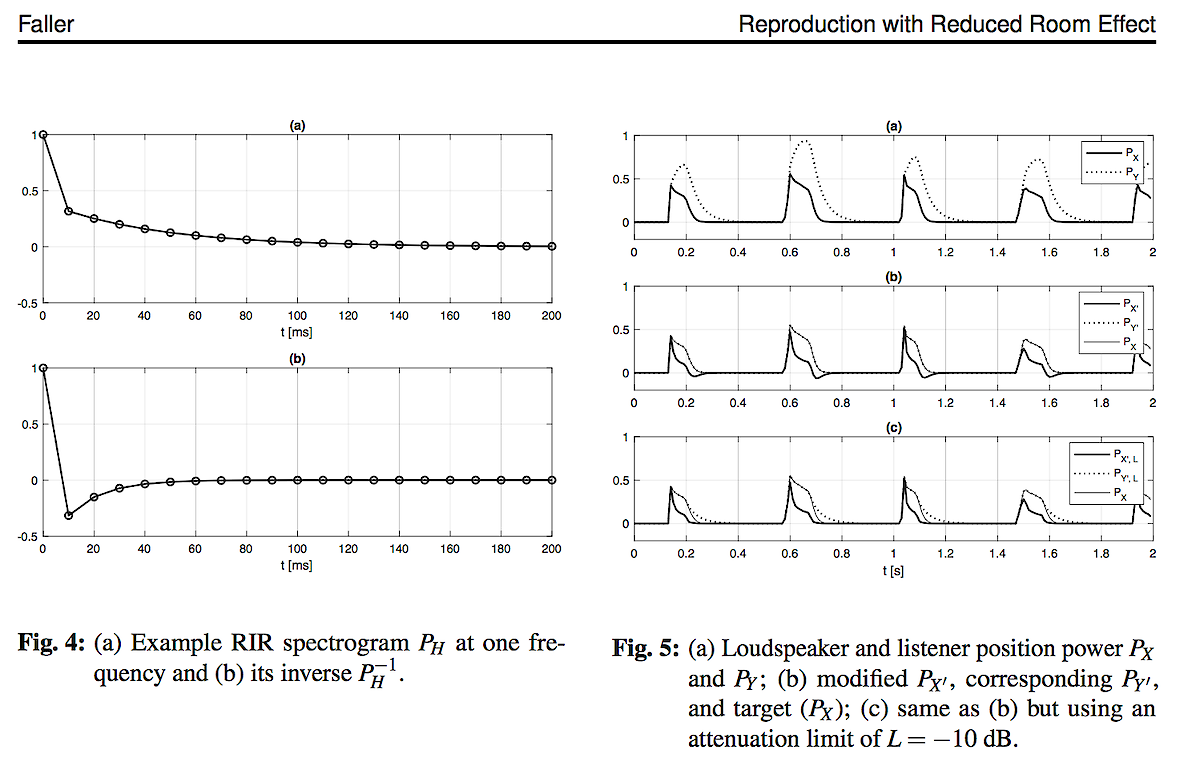
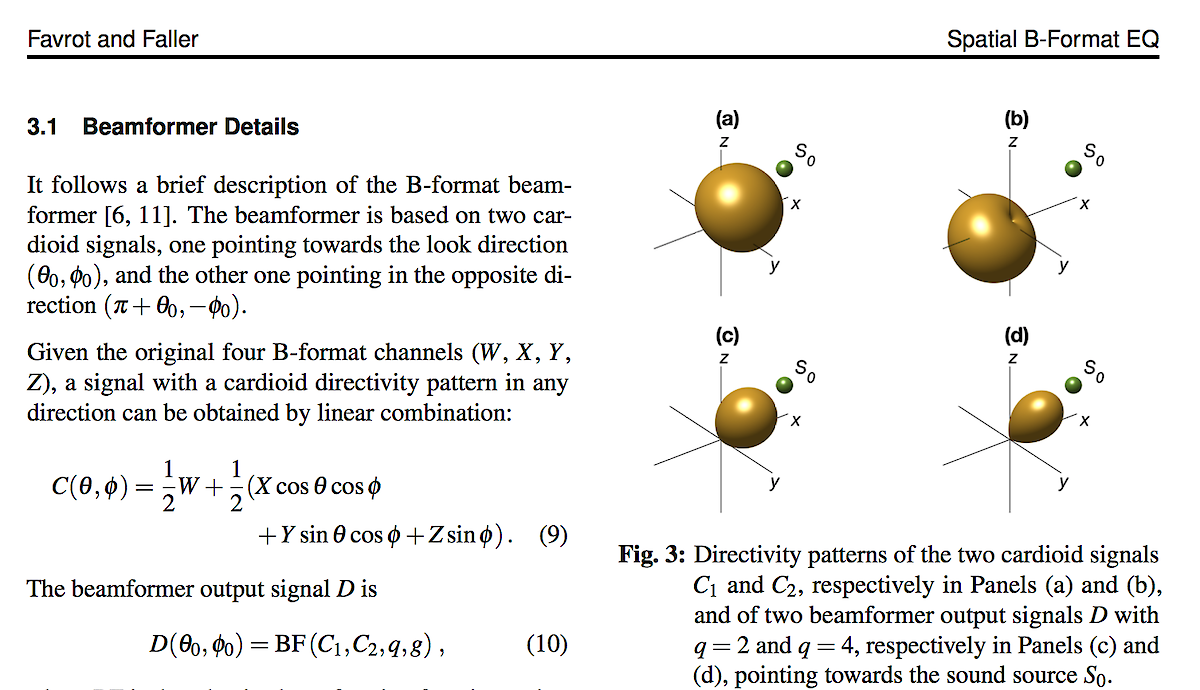
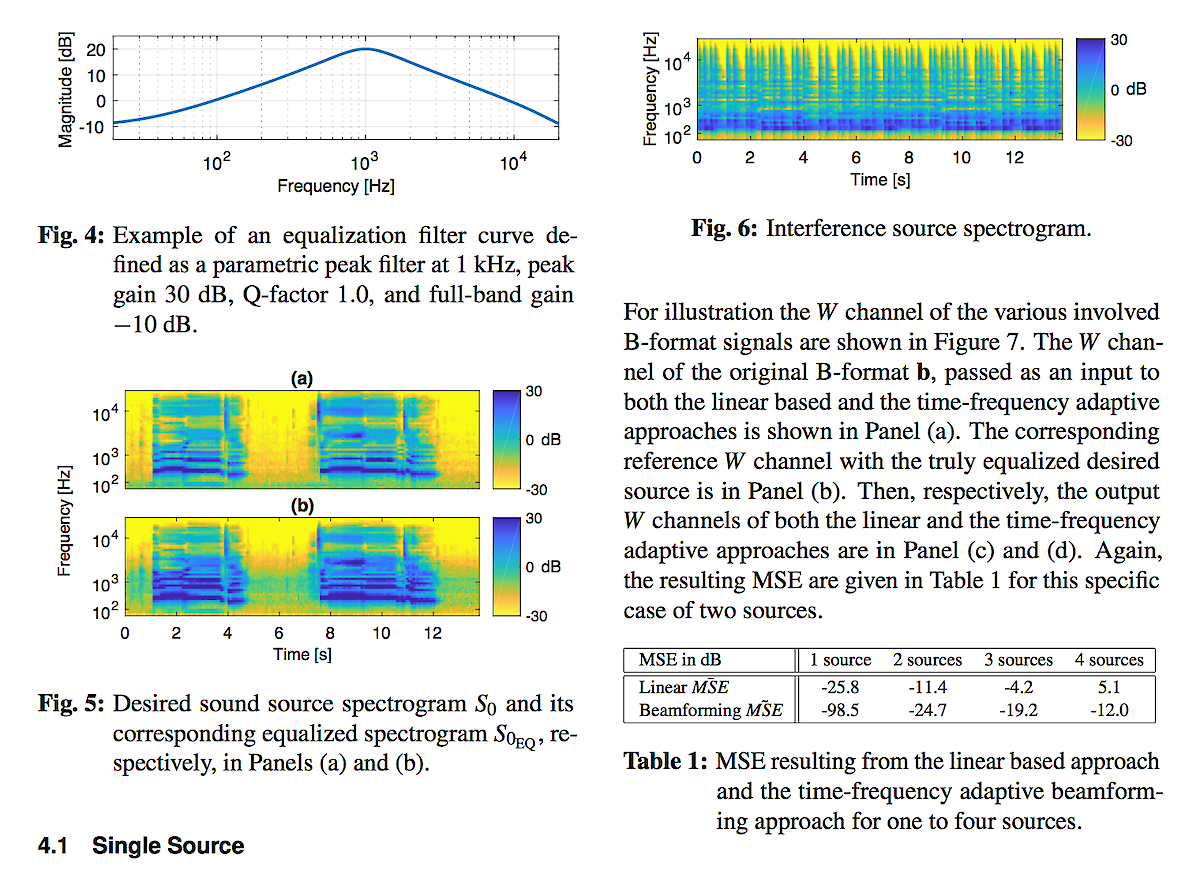
We are presenting two breakthrough innovations @ AES Convention
We are attending Audio Engineering Society Convention this week. Looking forward to see you there!
AES New York 2019, the 147th Pro Audio International Convention is a R&D and end-user focused event.
Besides being member in several technical committees, we are presenting technical papers on two breakthrough innovations:
1
Science behind Clarity
“Modifying Audio Signals for Reproduction with Reduced Room Effect”
C. Faller, Wed, Oct 16th, 11am
2
Advanced VR-Audio A/B-Format Postproduction
“Spatial B-Format Equalization”
A. Favrot and C. Faller, Fri, Oct 18th, 245pm
If you are not attending, or want to know more details than orally presented, the papers can be downloaded from the AES E-Library:
Update:
We paid the open access fee for the Reduced Room Effect (Clarity) paper, you can download it for free from AES e-lib:


September 18, 2019
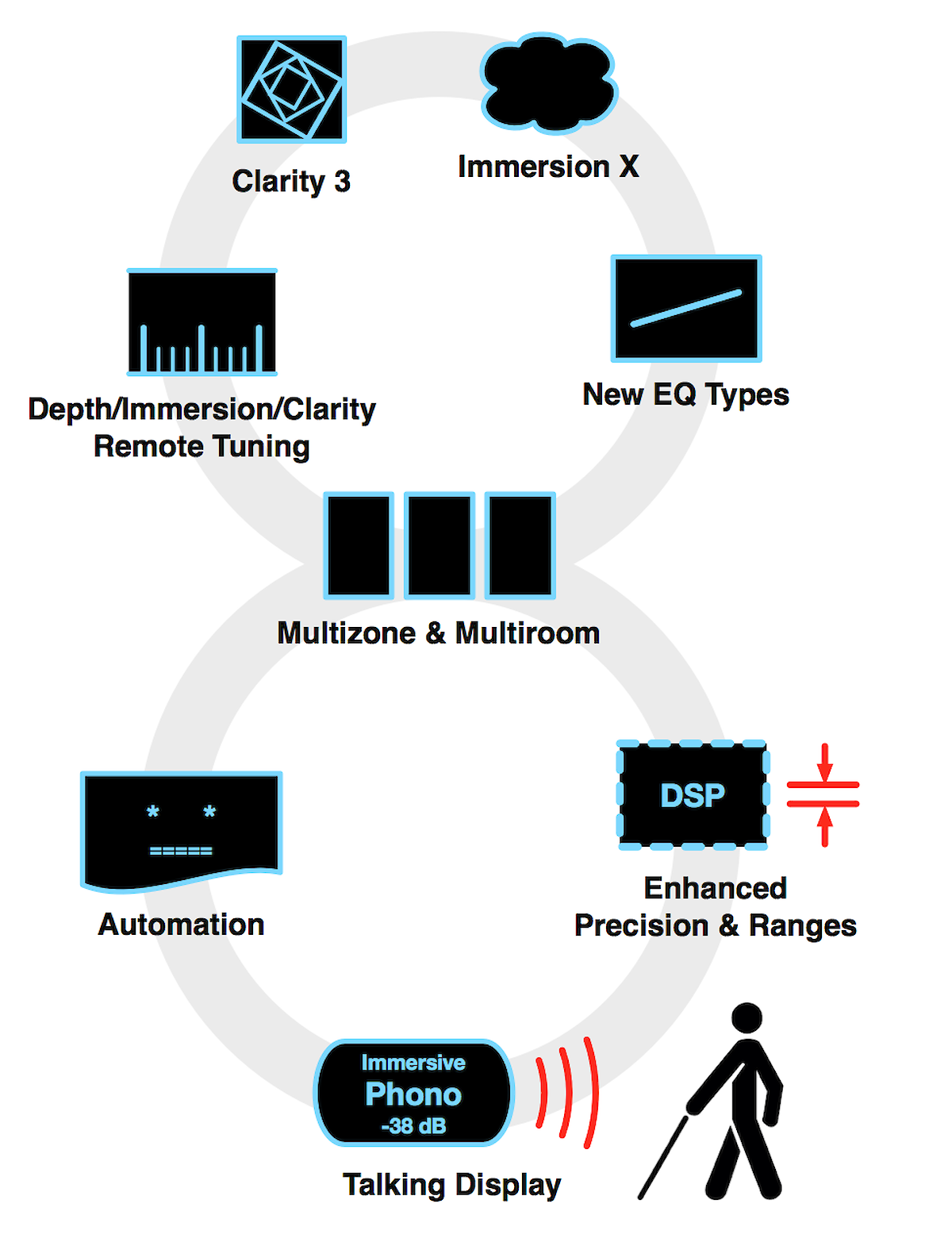
Yet another amazing update has been cooking at Illusonic.
IAP 8.0 with eight major enhancements.
No one is left behind.
Stay tuned…


May 28, 2019
Christof Faller
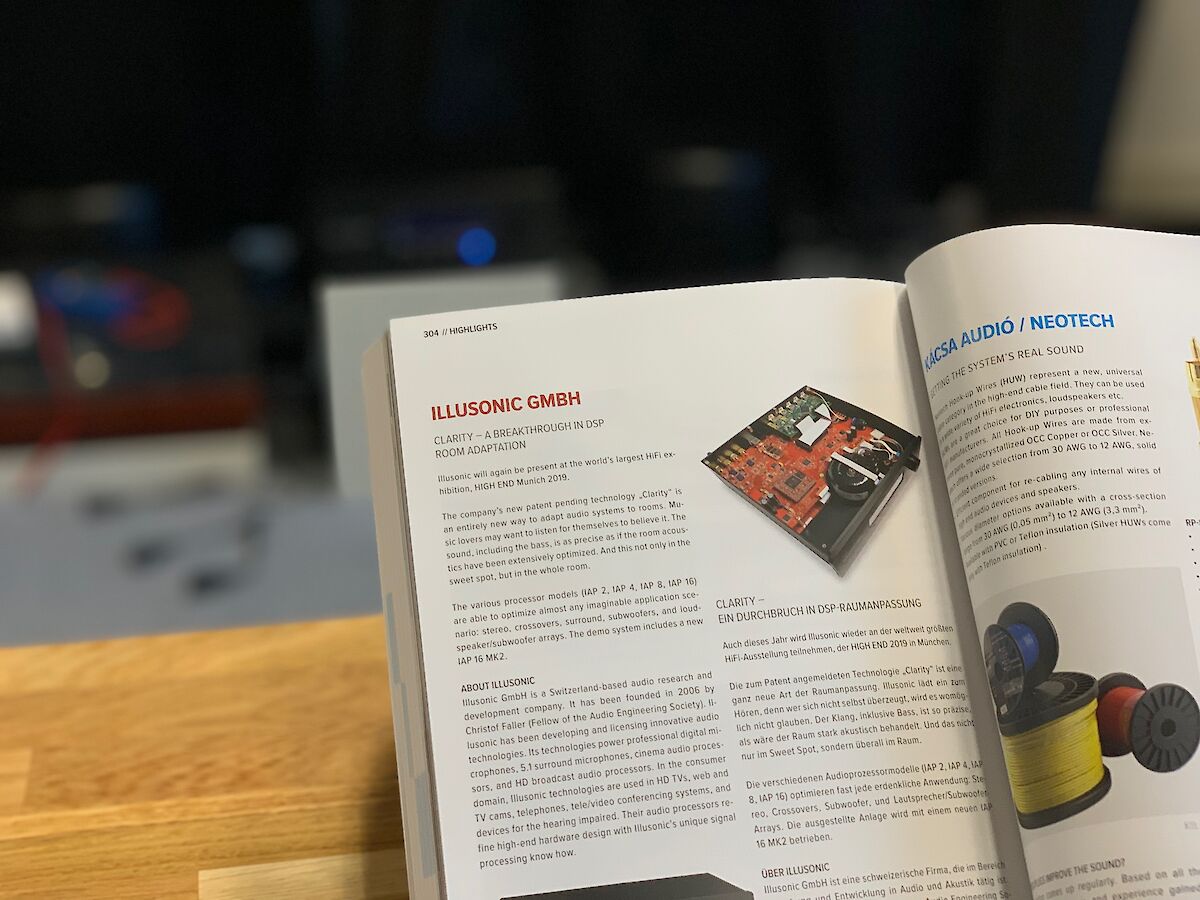

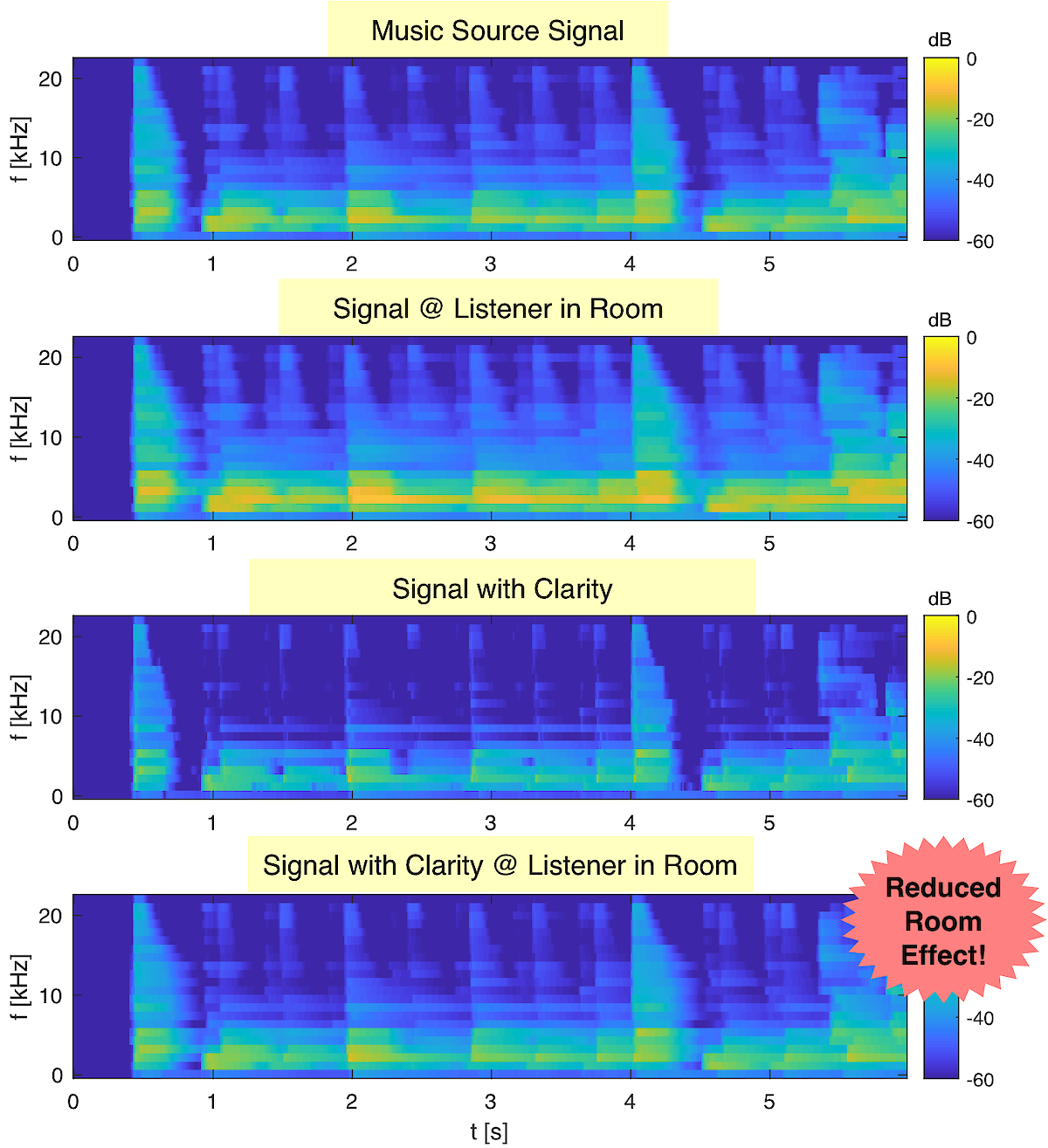

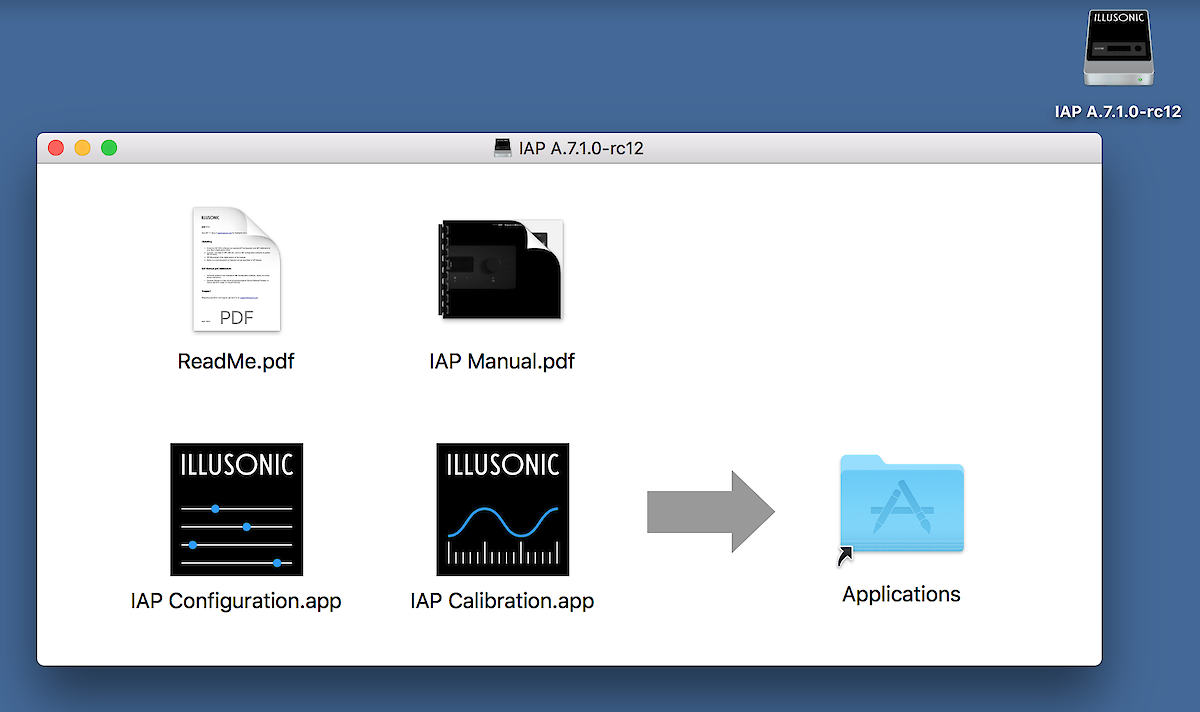
New features for better sound
Introduction
We have worked a full year on this update and folded in more new features than we had imagined initially. A pre-release has been demonstrated at High End Munich 2019 and HKAVPE Hong Kong 2019 audio shows with great success.
After a few more weeks of tuning and testing, we are releasing IAP Spring 2019 Update (IAP Version 7.1) today!
Main points:
Need acoustic treatment but can’t do it? Try the updated Clarity feature!
A nice music collection has nice dynamic range. When listening casually, new “Dynamic Range” feature re-masters music/movies in real-time for casual/soft listening
From now on, updating IAP firmware is much easier, IAP Configuration software does it automatically
Download
IAP Version 7.1 can be downloaded here (for legacy “IAP 16 wide” and all current IAP models).
Details
Clarity has been re-developed from the ground up and is now patent pending. It precisely attenuates power in time and frequency such that after your room “is applied” the recording will be maintained more precisely, with less room interaction, in time and frequency.
Dynamic Range, technically speaking a multi-band expander-compressor with interband information exchange to prevent coloration, re-masters music and movies such that they have less dynamic range. Why would one want to do this? For casual listening, soft listening, less dynamic range reduces fatigues and prevents that you’d desire to change volume frequently.
Clarity and Dynamic Range are part of sound settings presets. Both work for stereo and multi-channel (movies) sources.
For long on our to do list has been to simplify upgrading of IAP firmware and software. Now IAP Configuration software automatically detects when IAP is outdated and allows to update IAP directly, while maintainning all parameters. Along with this, we were able to greatly simplify the IAP firmware/software package.
Detailed List of Changes
IAP Firmware
new version of Clarity (“Clarity 2”)
new audio processing feature “Dynamic Range”
moved Inputs Gain action to before other signal processing, such that dynamic range considers it and increased range to -10..20 dB
new audio processing “Clarity II”, replaces Clarity
depth/immersion updated, more clean sound (improved pre-processing, offset control)
prevent pop when changing phono type on mk2 main board
display sleep now works in preset changing mode
HDMI 2.0b improvements (firmware update)
modified factory default presets
save HDMI version in ROM, such that after failed HDMI firmware update HDMI board version is still known
implemented mute for dsp-generated SPDIF
modified mute time when changing presets (500ms => 300ms)
IAP Configuration Mac/PC software
add support for new feature “Dynamic Range”
increased Input Gain range to -10..20dB
new default presets
now force IAP to be powered on to work with IAP Configuration
update USB driver
add IAP firmware update feature
add .iap file name to window title
IAP Calibration Mac/PC software
add support for new feature “Dynamic Range”
added new Clarity for auralization
fix issue with Auralization presets
extend RIR range for auralization
improved auralization when 1 mic is used
changed default setup in off-line mode to stereo
update USB driver
fixed bug in 7.0.x, IAP calibration data were not read on launch
add .iapc file name to window title
auralization bug-fix (time domain plot filter was applied if enabled)
when reading eqs from IAP, irregular eqs are now deleted with warning


April 12, 2019
Christof Faller
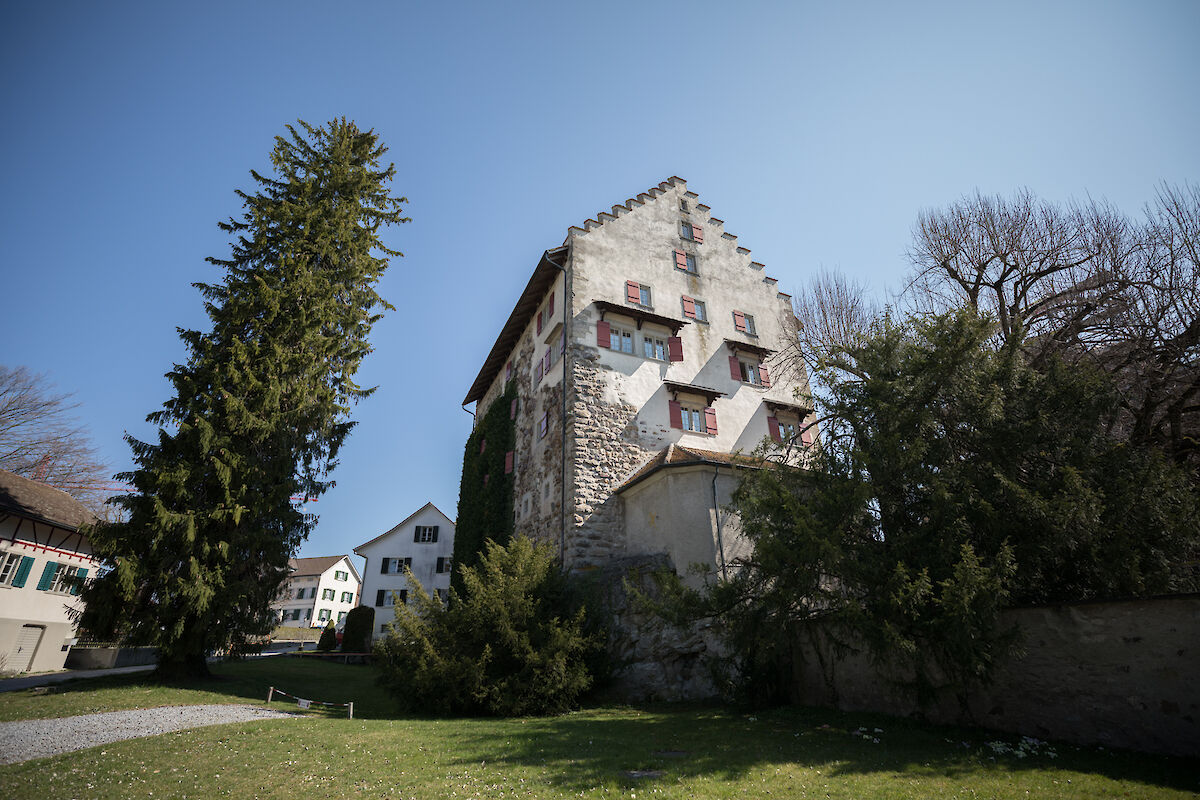
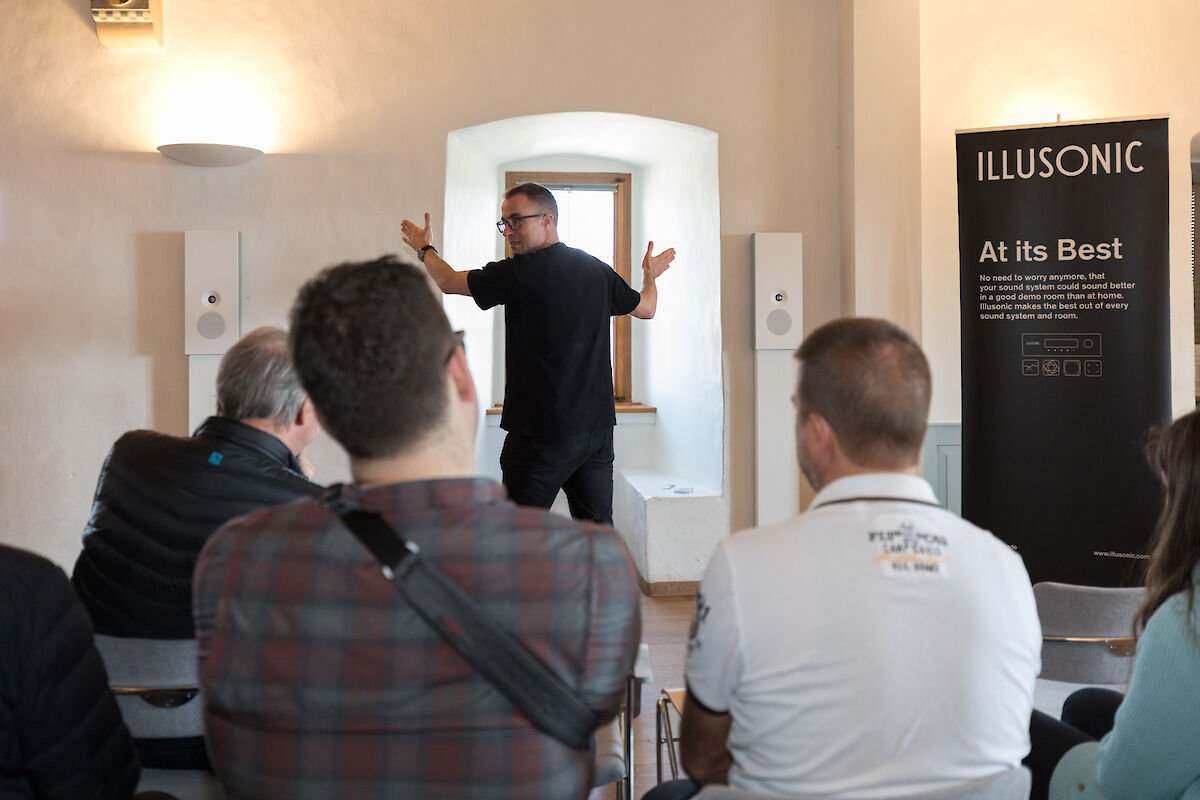
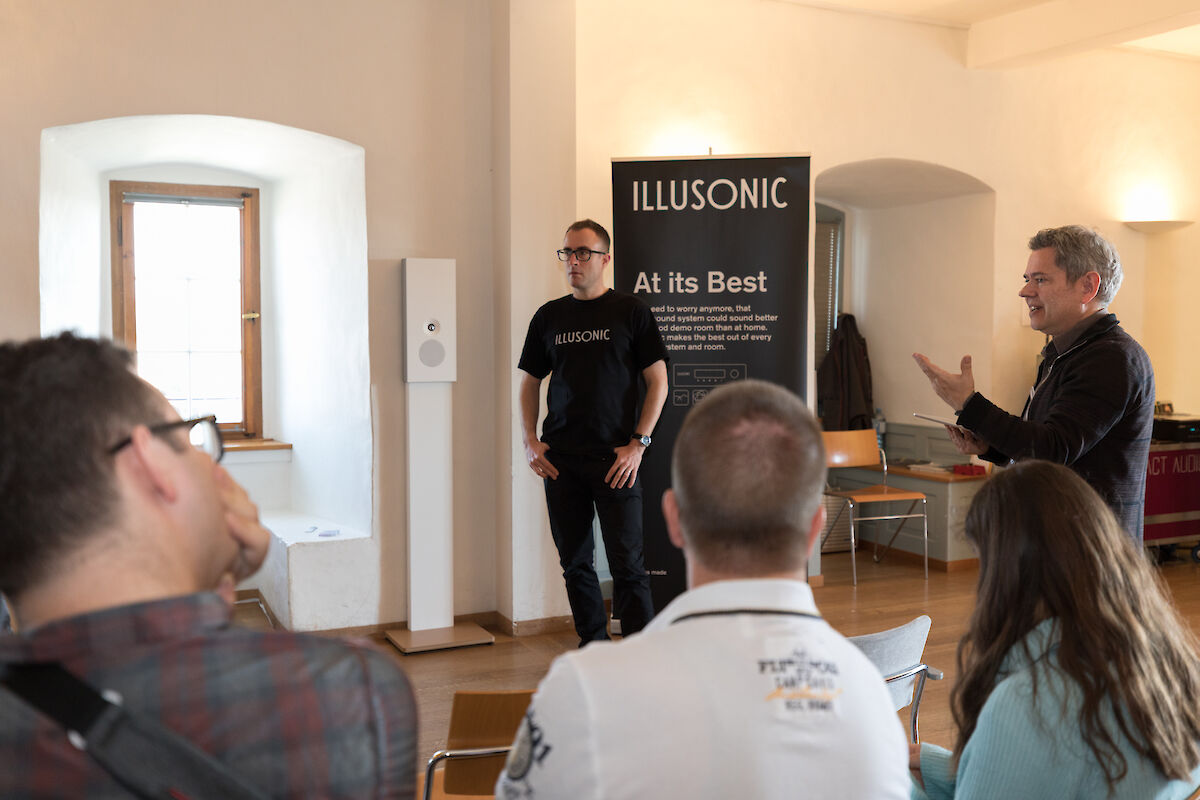
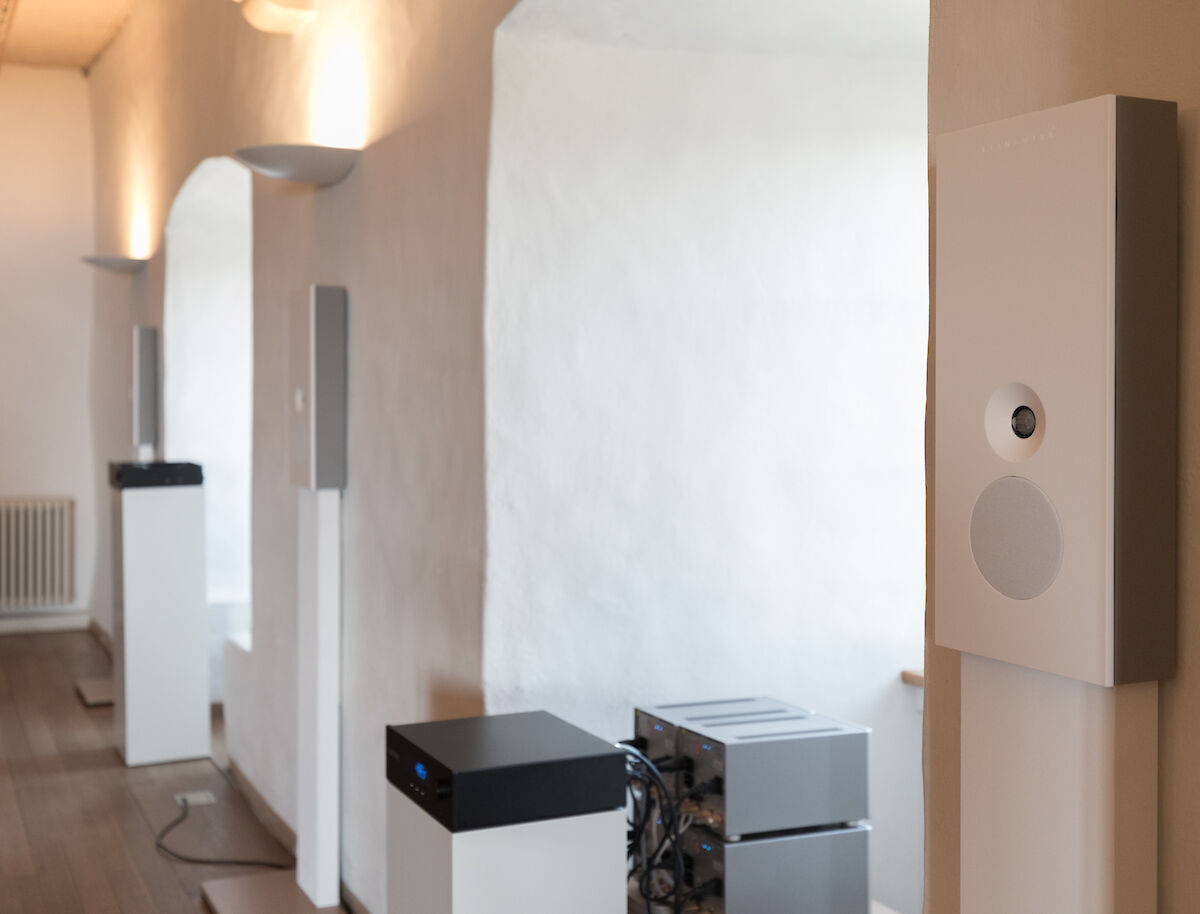
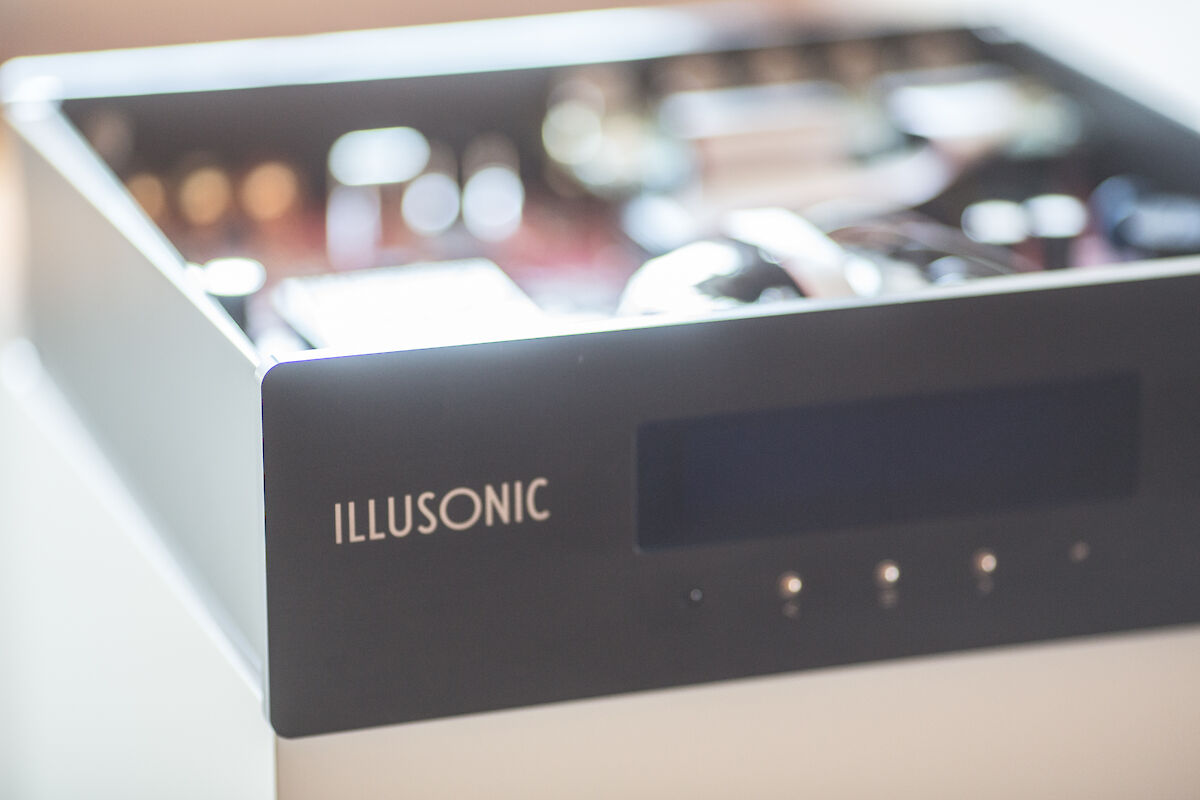
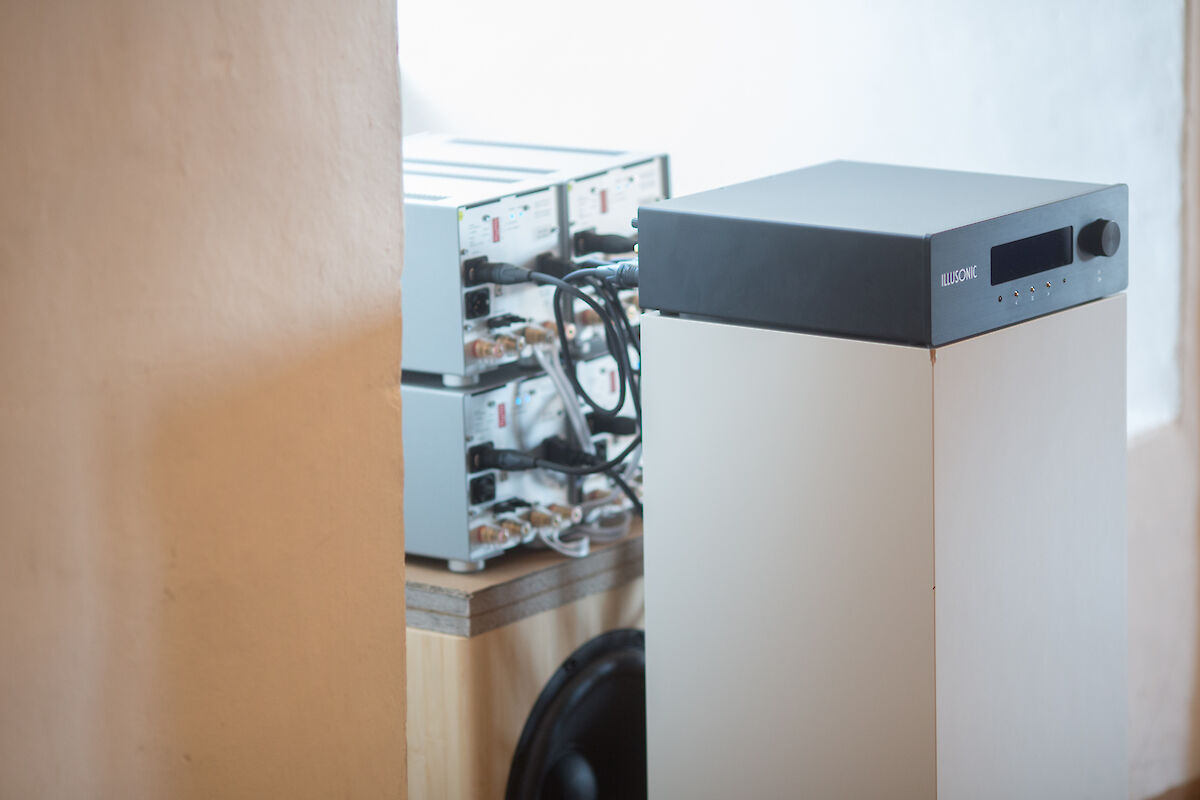
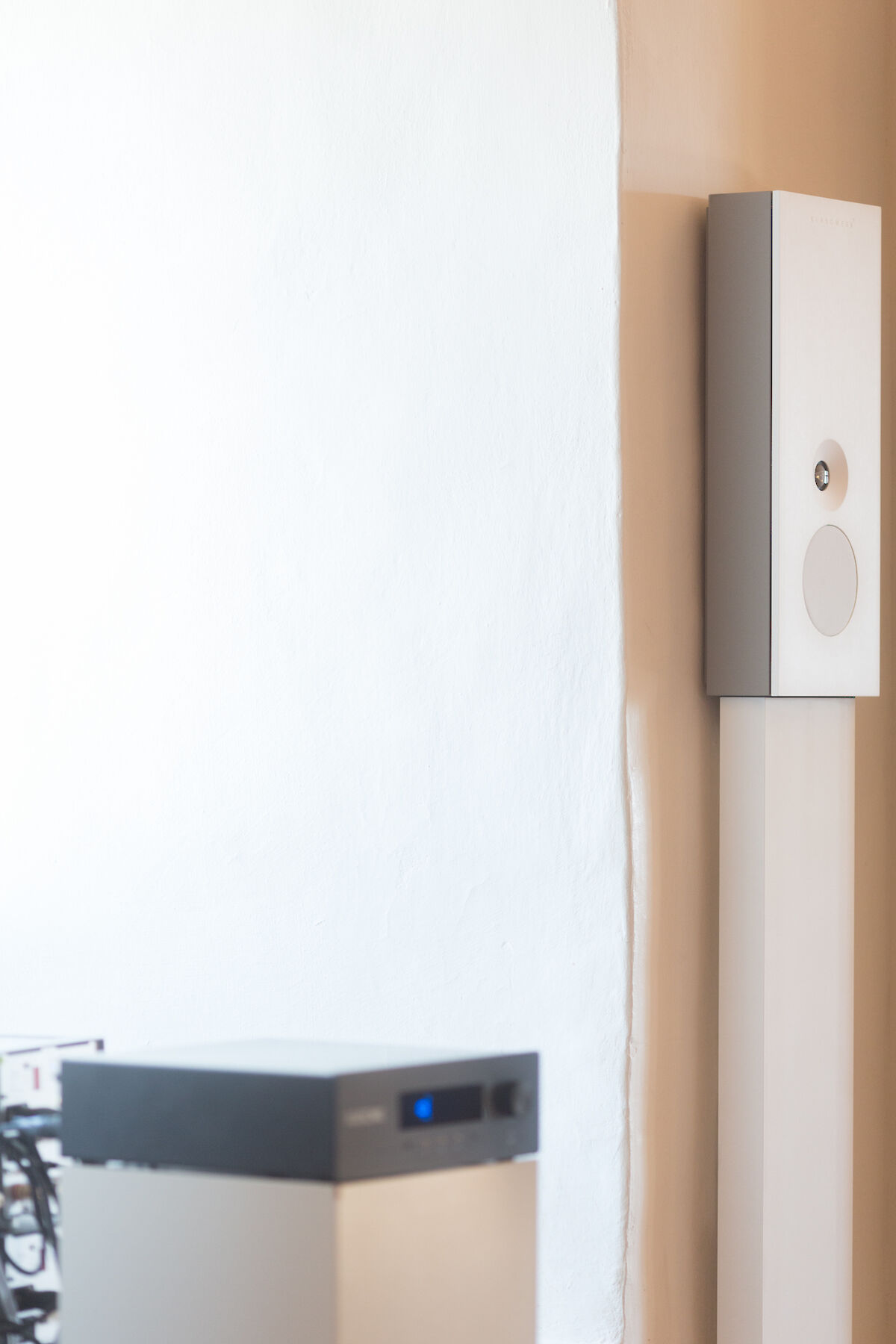
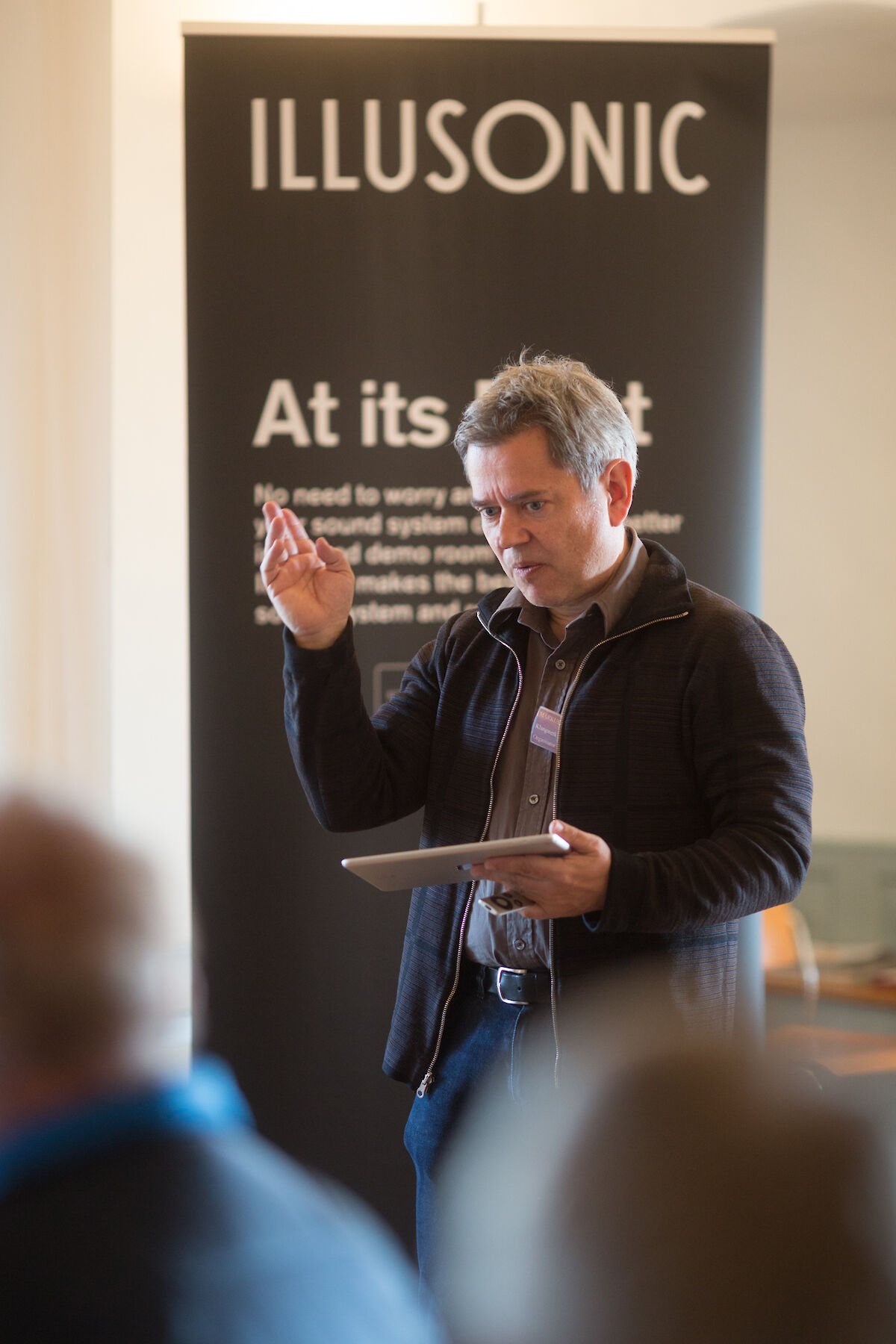
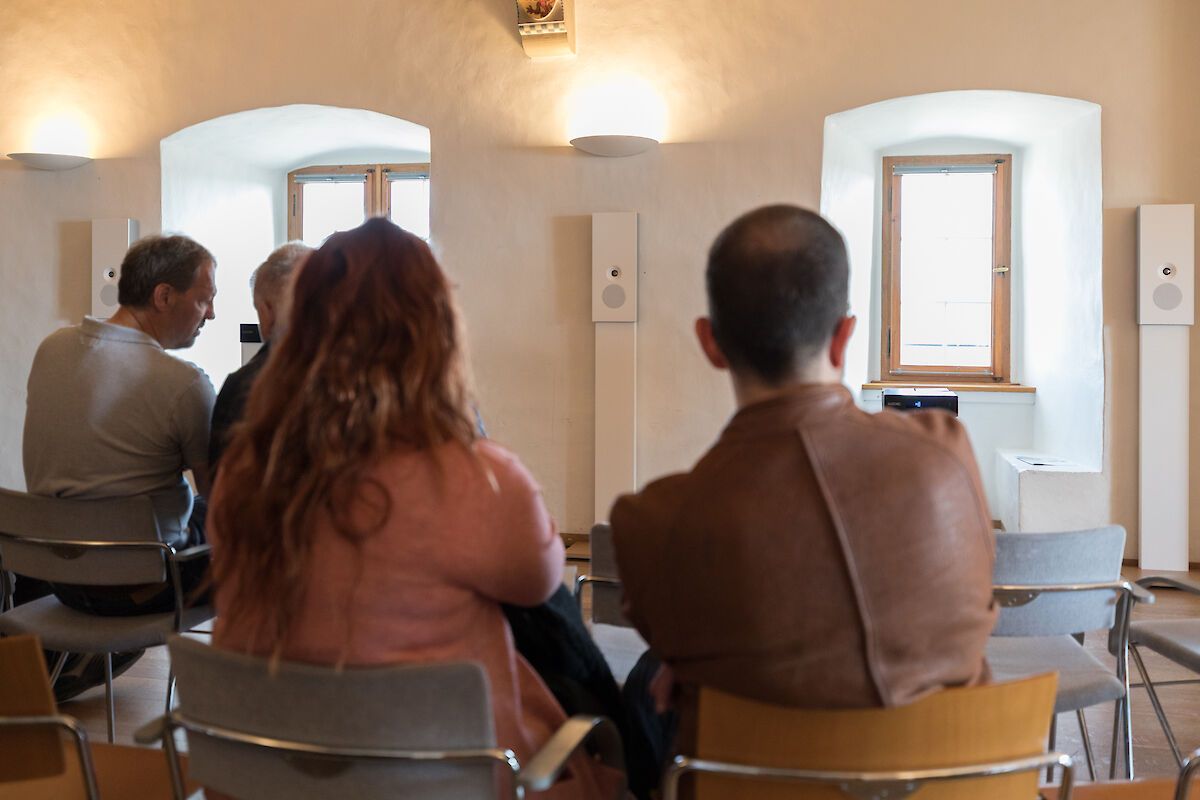
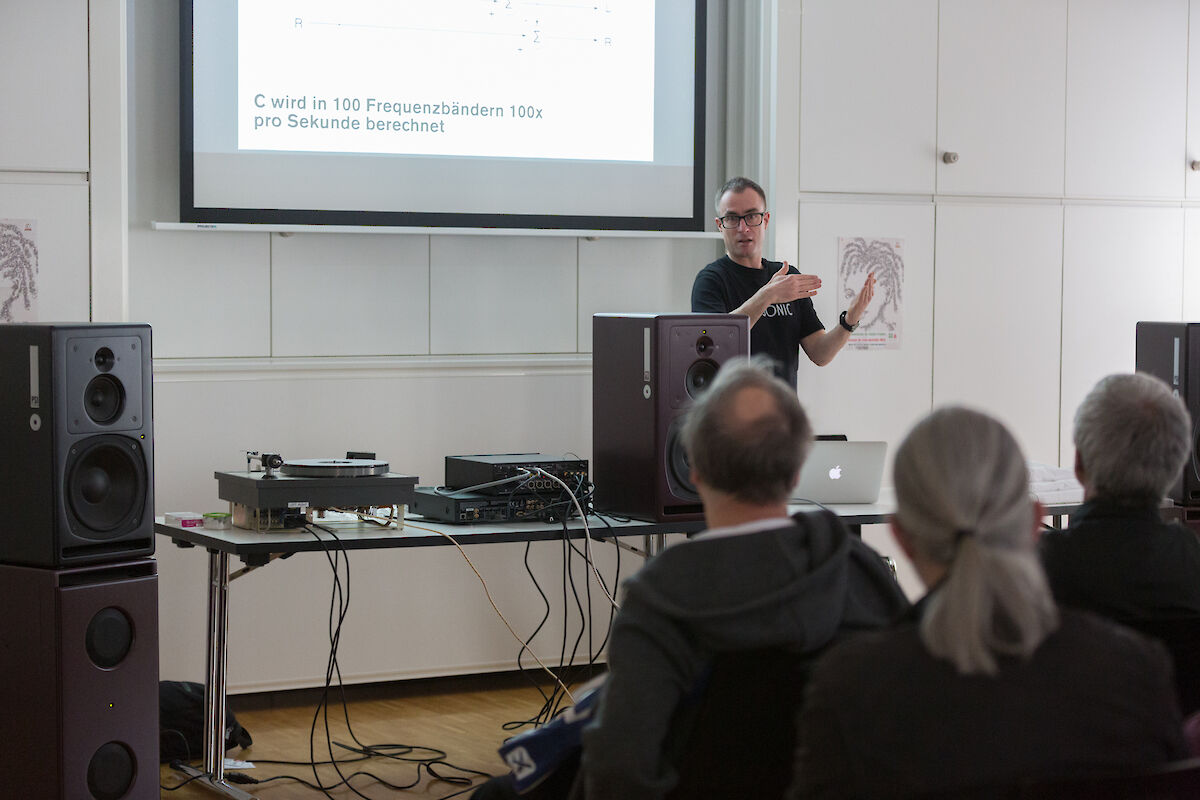
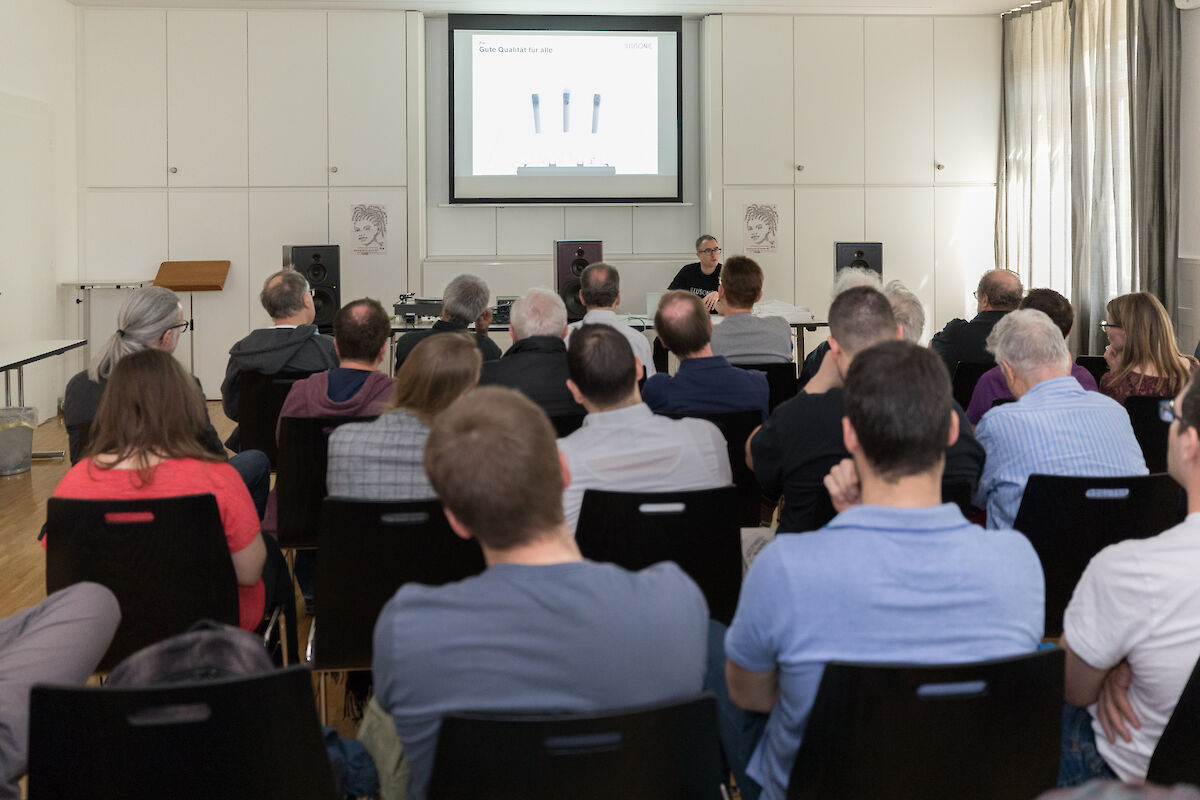
All about three-channel stereophony
This year, we were exceptionally involved at the Klangschloss 2019 audio show in Greifensee Switzerland. The show takes place in a medieval castle embedded in a picturesque location at a beautiful small lake. The show is just 3km from Illusonic offices in Uster, our “home audio show”.
https://www.klangschloss.ch
On both days, we had two times one hour “Showcase” with Klangwerk, Zurich-based loudspeaker manufacturer and organizer of Klangschloss. We showed a 3.1 setup playing stereo music via a 3.1 loudspeaker setup. IAP converted stereo music to 3.1. Beautiful wall-mount Klangwerk loudspeakers were used. Sound worked especially well this time, despite of challenging castle acoustics. Was it Clarity II which made the difference? Or the on-wall loudspeakers with little back-reflection interferences? Or the nice closed-box subwoofer from wavecontrol.ch Daniel Müller? I guess a combination of things.
On Saturday I gave a seminar in Klangschloss’ conference room about stereophony and center channel/loudspeaker. I reached out quite far back in history, to first center channel proposals from Bell Labs in the 1930’s, to Klipsch three channel system 1950’s, and finally to Illusonic’s modern DSP-based stereo to 3-channel conversion.
Many thanks to Klangwerk and PSI Audio for their collaboration and support!


March 18, 2019
Christof Faller
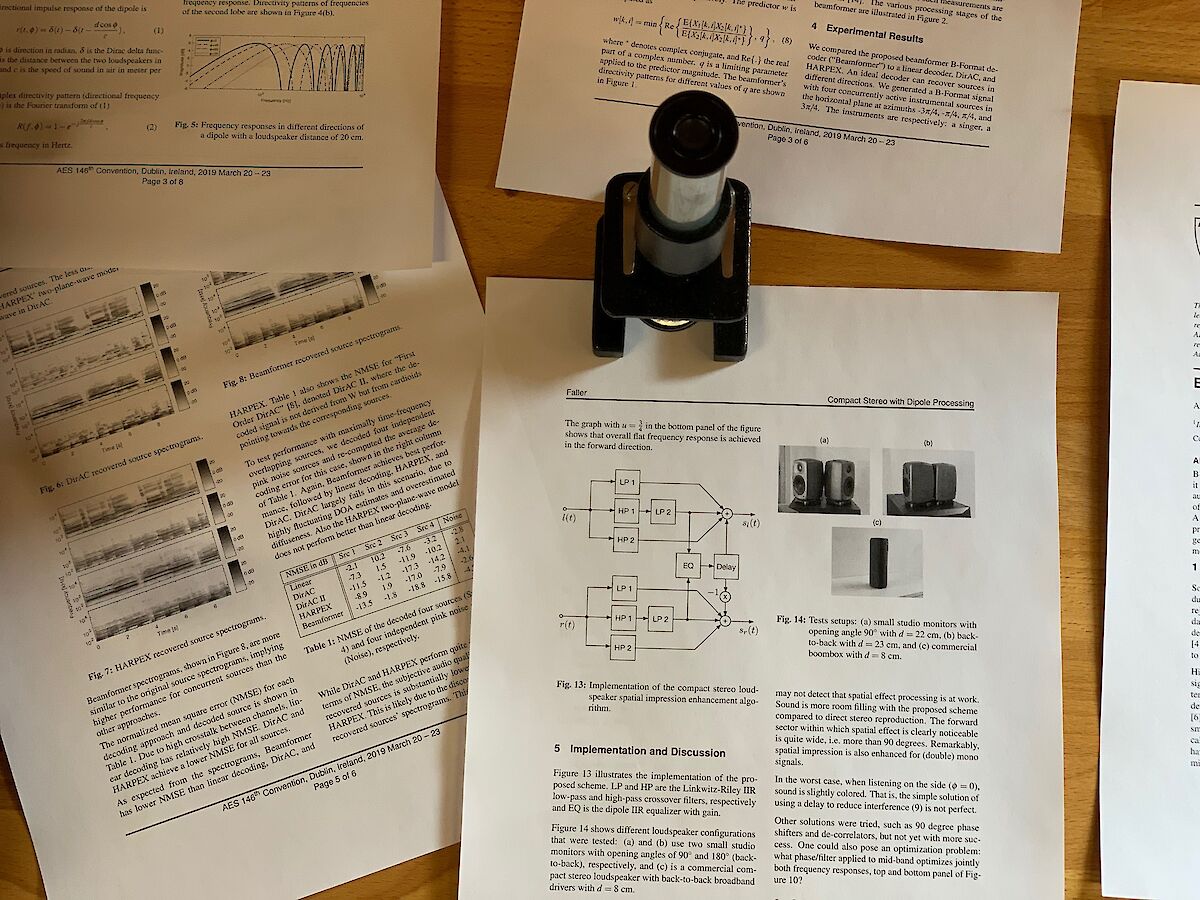
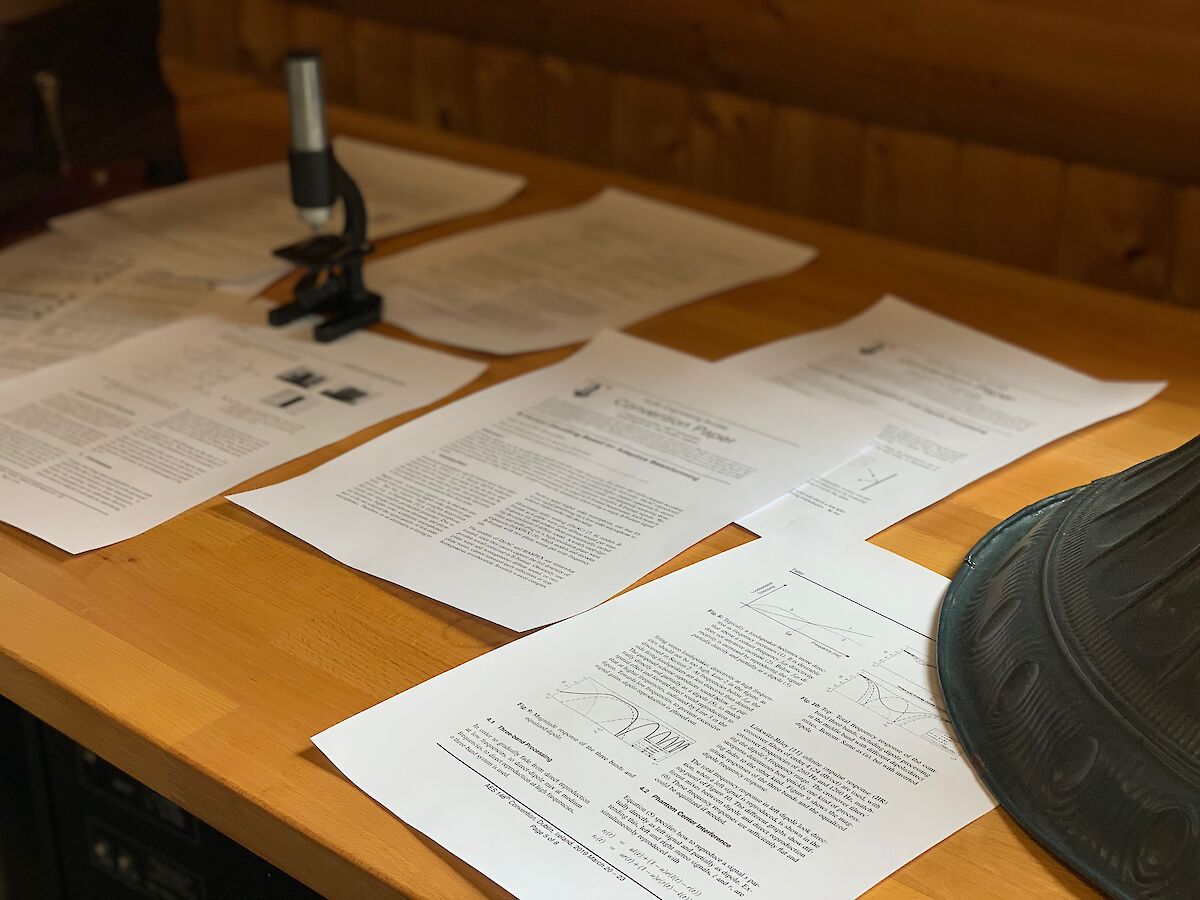
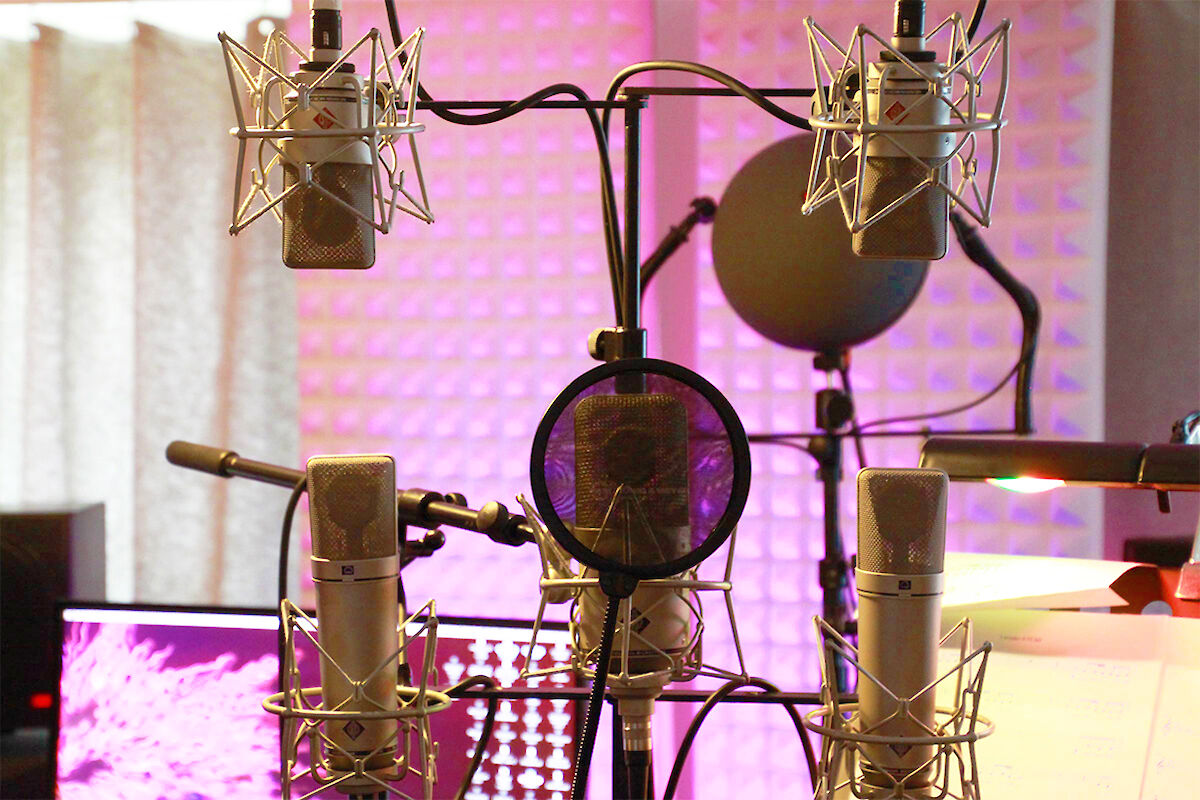
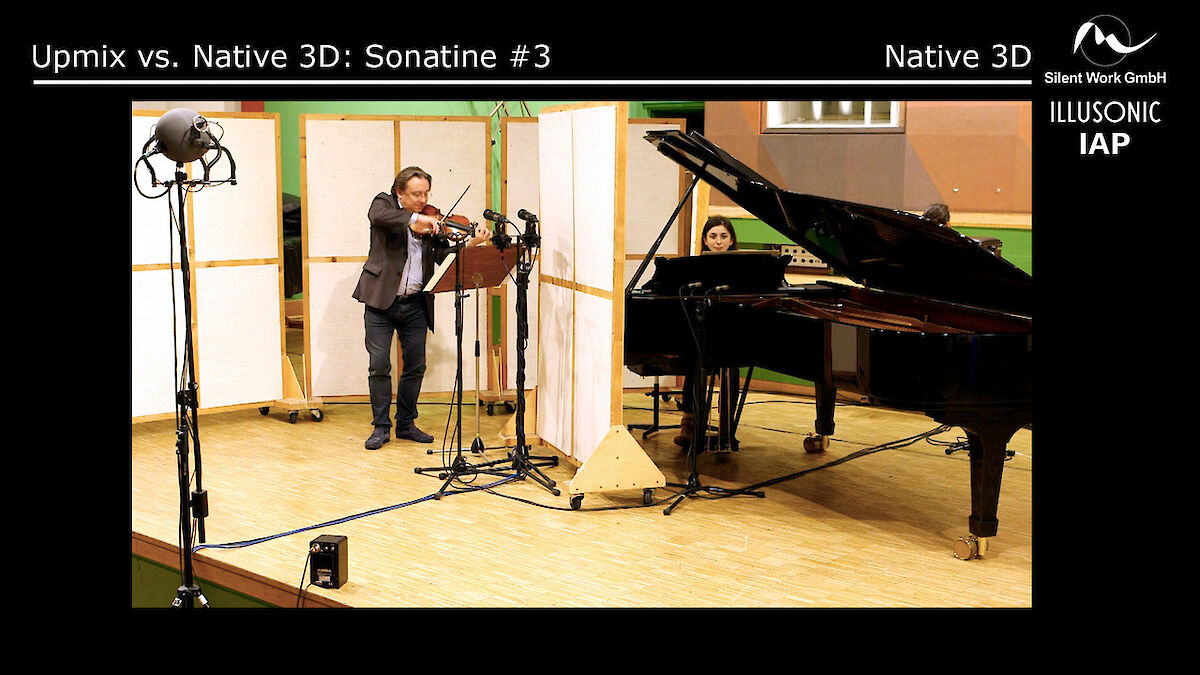
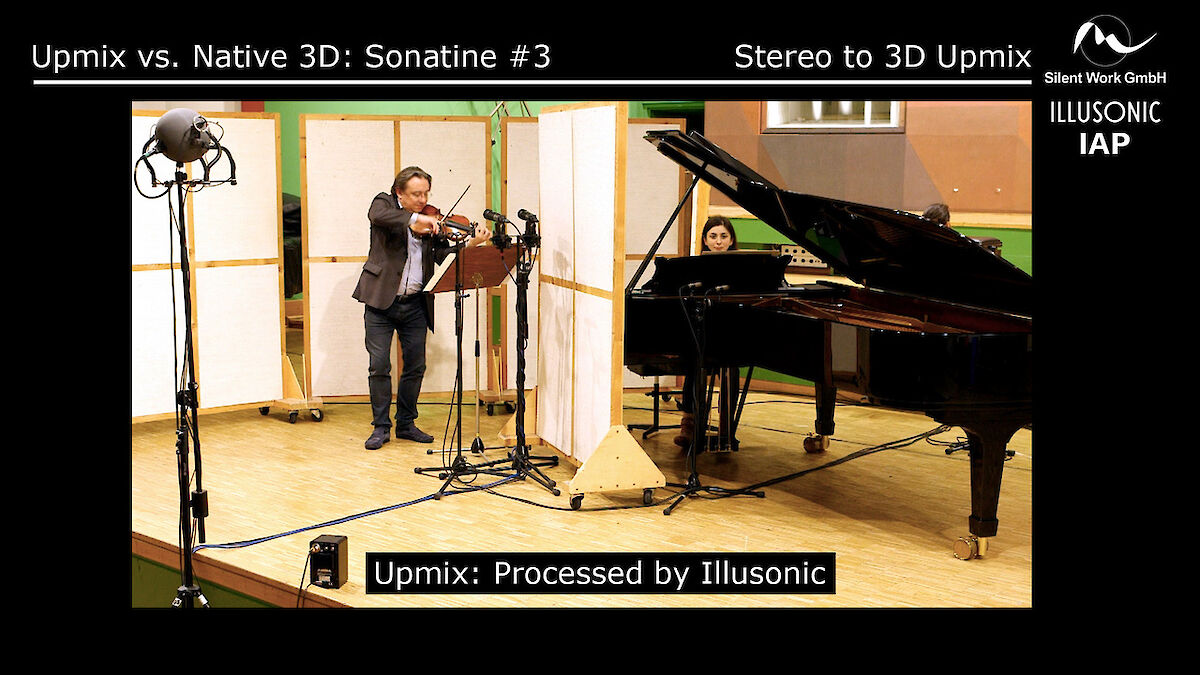
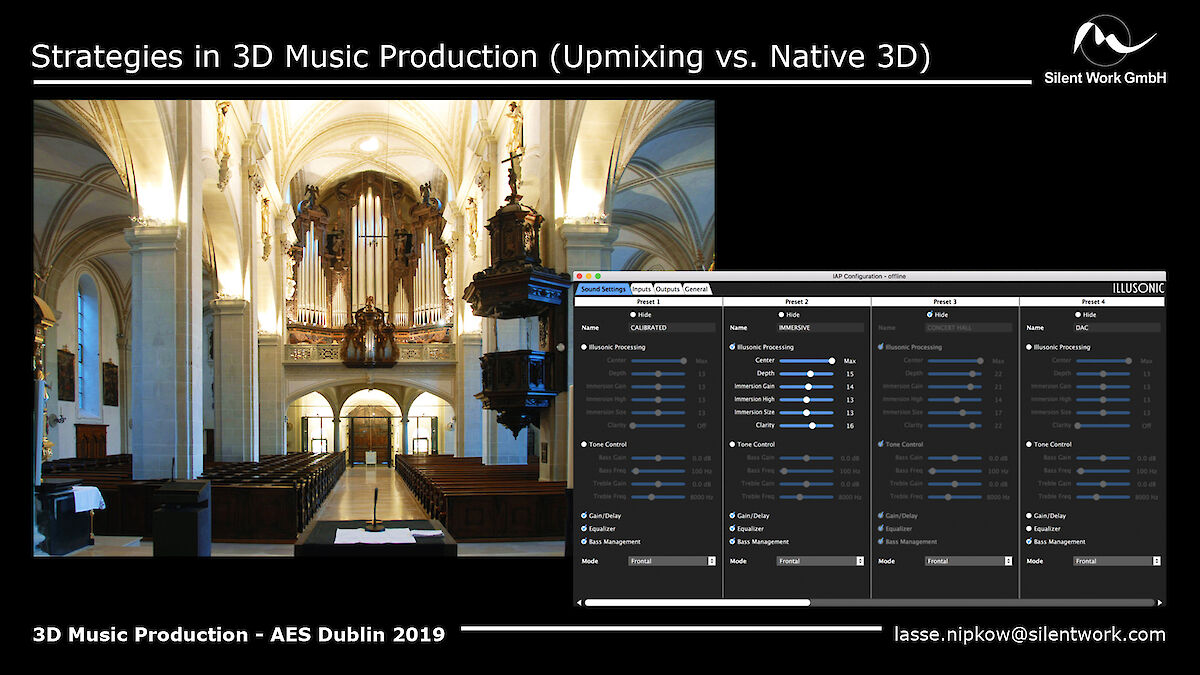
Illusonic presents its latest innovations at preeminent pro-audio convention.
AES Convention is the preeminent bi-yearly gathering for professional audio research, education, and networking. If your interests include Studio Recording, Live Sound, Networked Audio, Broadcast & Streaming, Music Production, Post Production, Game Audio, Spatial Sound, Audio for AR/VR/XR and Product Development, AES Dublin is the place to be! Whether you are an end user, researcher, educator or student, the convention is the place to Listen, Learn and Connect.
We are giving two lectures:
Thursday March 21
Compact Stereo Loudspeakers with Dipole Processing
Christof Faller
http://www.aes.org/events/146/papers/?ID=6559
Friday March 22
B-Format Decoding Based on Adaptive Beamforming
Alexis Favrot and Christof Faller
http://www.aes.org/events/146/papers/?ID=6566
An interesting tutorial is held by Lasse Nipkow, comparing native 3D music production to upmixing:
Wednesday March 20
Strategies in 3D Music Production (Upmixing vs Productions Aimed for 3D)
Lasse Nipkow
http://www.aes.org/events/146/tutorials/?ID=6582
Come and listen to great native 3D music productions, and compare them to Illusonic Immersive Upmix!
Hope to see you in Dublin!


January 18, 2019
Christof Faller
Modifies different objects in A/B-Format separately!
There are only limited possibiliites in post-production for live for VR recordings (A or B-Format).
Illusonic Spatial Equalizer inputs A/B-Format and outputs B-Format.
Different objects and instruments can be equalized separately, including changing their gain.


December 20, 2018
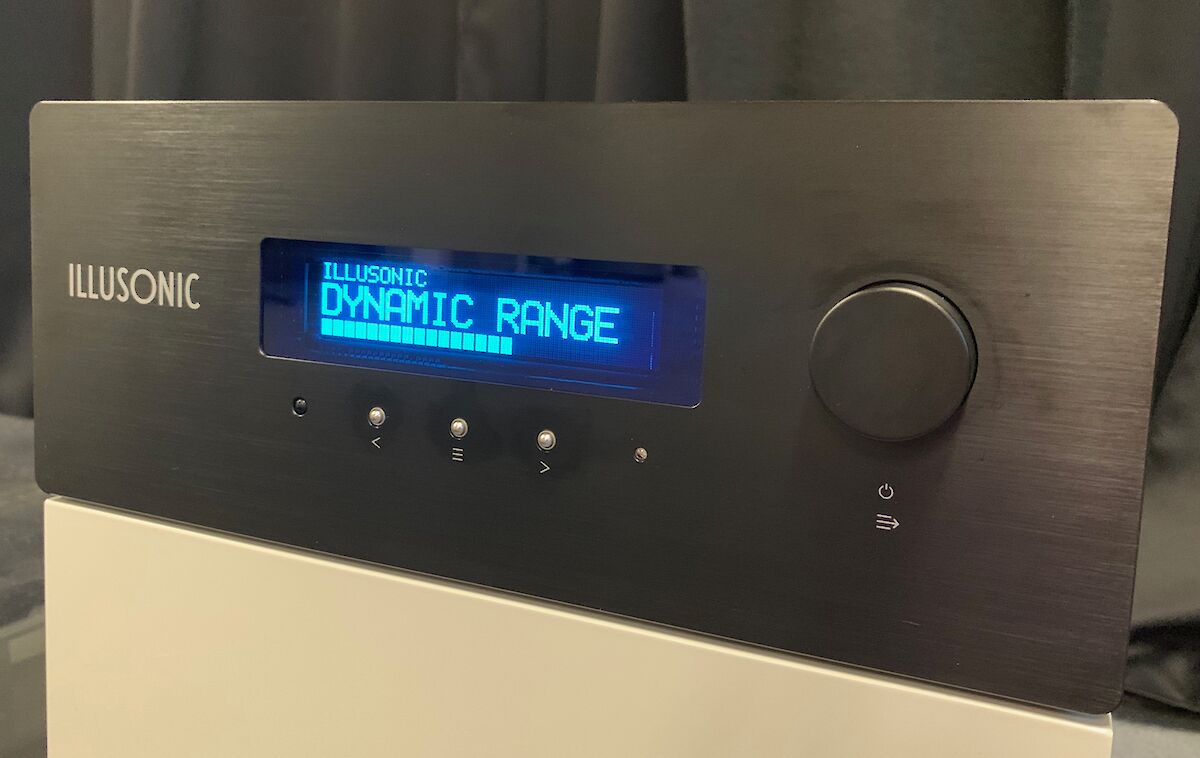
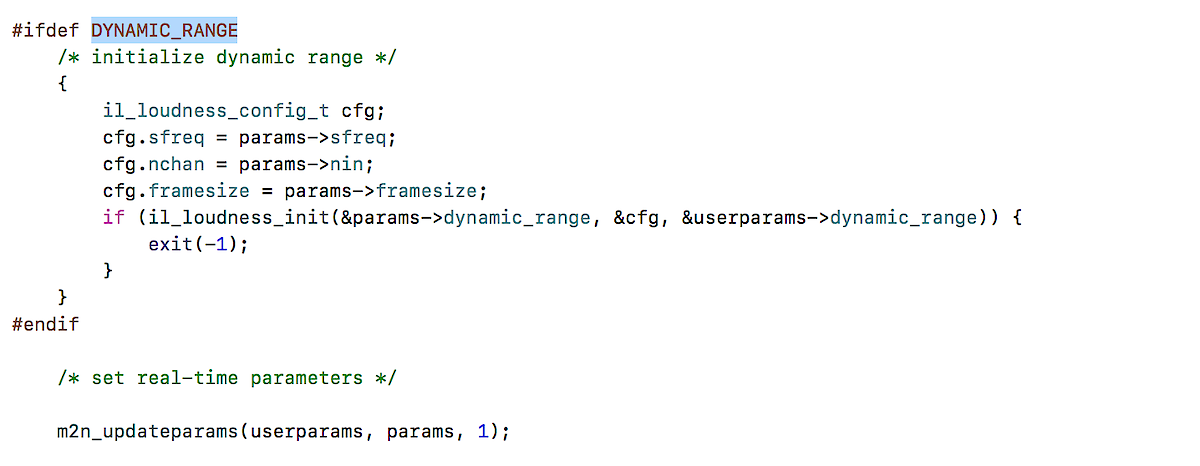
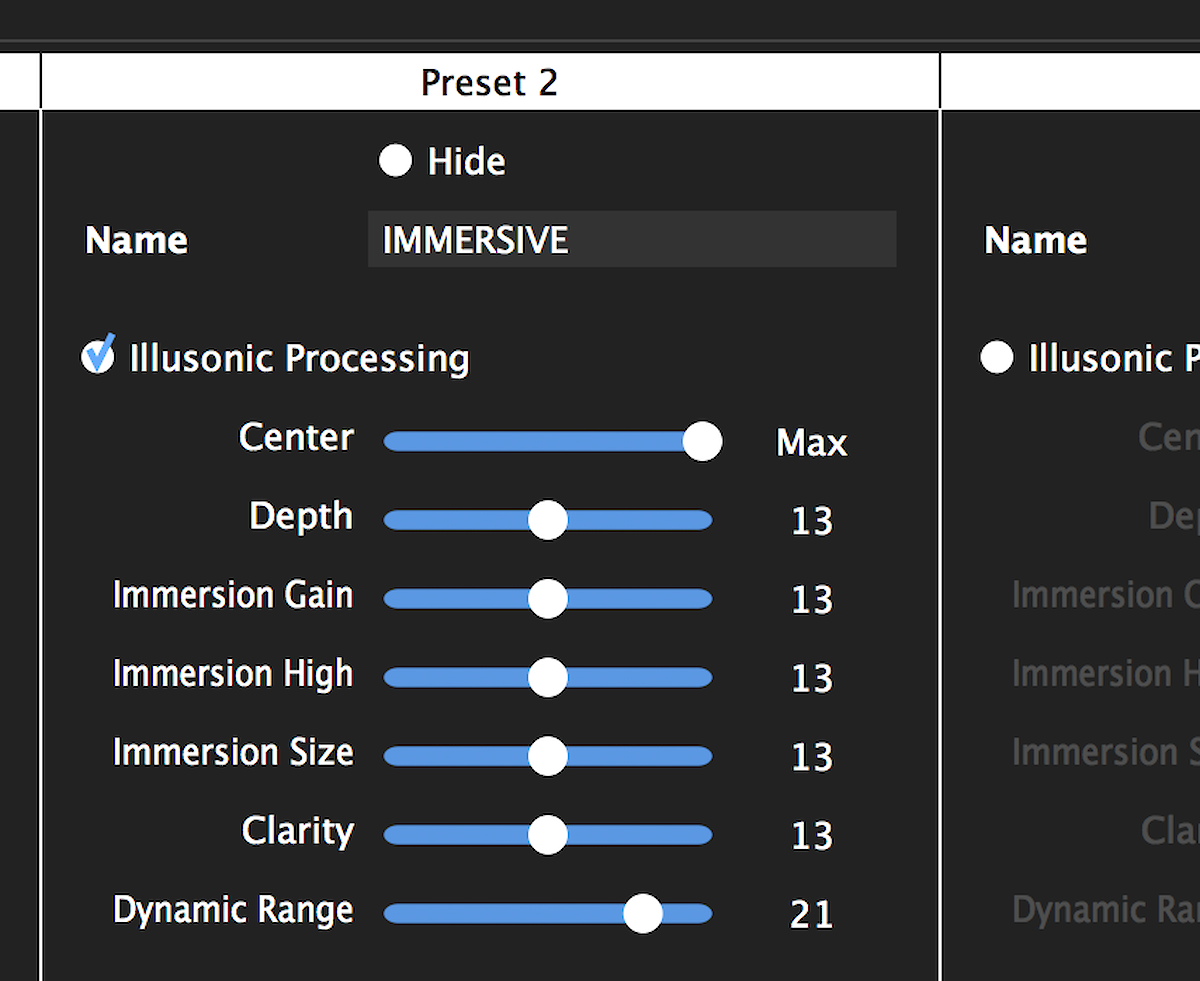
Integrating Dynamic Range into IAP’s digital signal processor.
While scheduled for an IAP release 7.1, coming in Spring 2019 time frame, I got very impatient to try the new Dynamic Range feature under real-world conditions.
While we have had computational complexity in mind during development, Dynamic Range turned out a bit more complex than originally expected. Take the maximum-case, where a 7.1 movie is applied to it:
8 channels and 4 subbands makes effectively 32 audio channels to be processed. On a memory sparse DSP, a challenge.
Alone the crossovers need 96 biquad filters!
Additionally 16 filters are used for loudness weighting and another 24 filters for filterband equalization - a total of 136 biquad filters !!!
Besides of the filters, the expanders/compressors process the 8 channels of each of the 4 subbands.
Managed to get it to run on the second day of DSP integration work. Running IAP at maximum processing case (room eq, crossovers, bass management, 7.1-in 15.1-out immersive), the DSP has 74% and 96% processing load without and with Dynamic Range, respectively! IAP without Dynamic Range now requires a bit more processing load, since I had to move some memory from Immersion to slow external SRAM.
That is, without detail optimization, we just tightly made it! Plan to optimize a bit later, to get again more DSP margin.


December 17, 2018
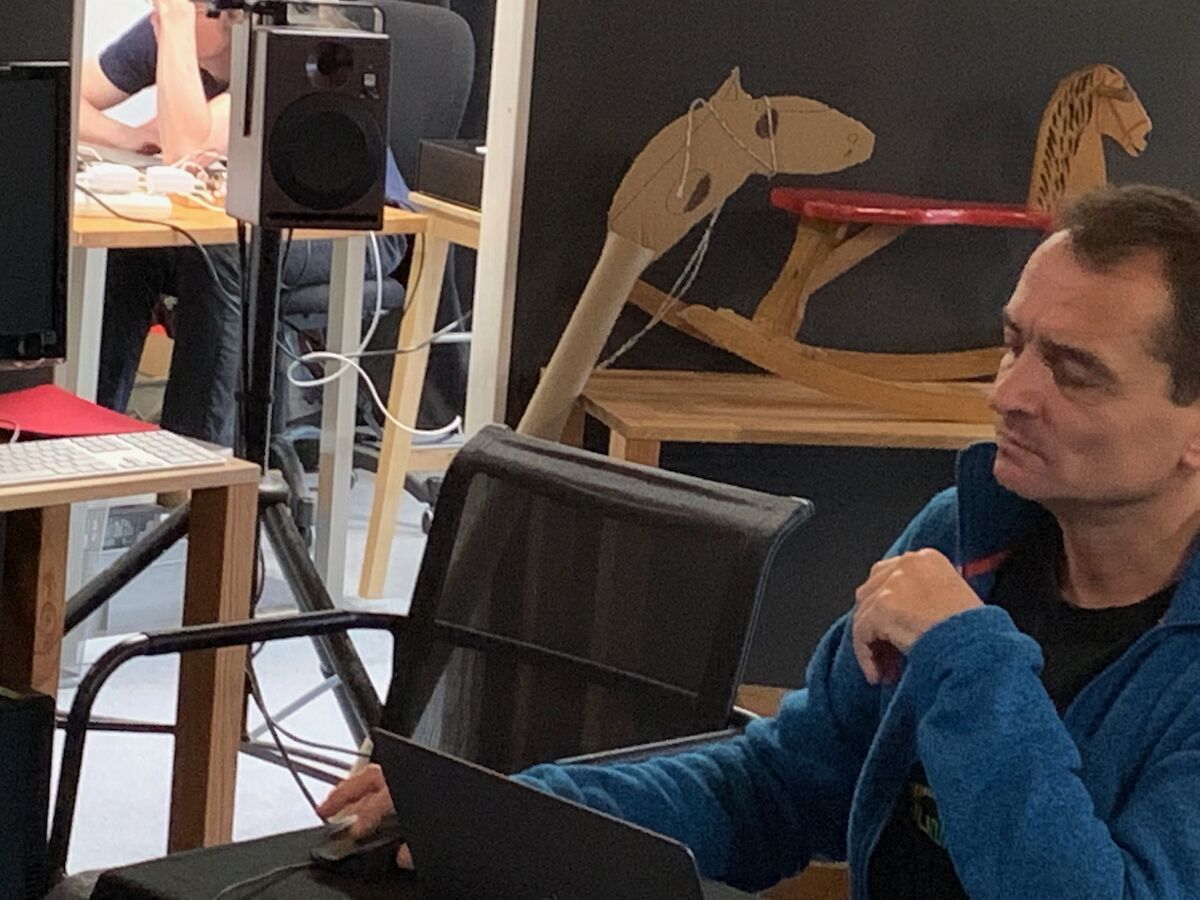
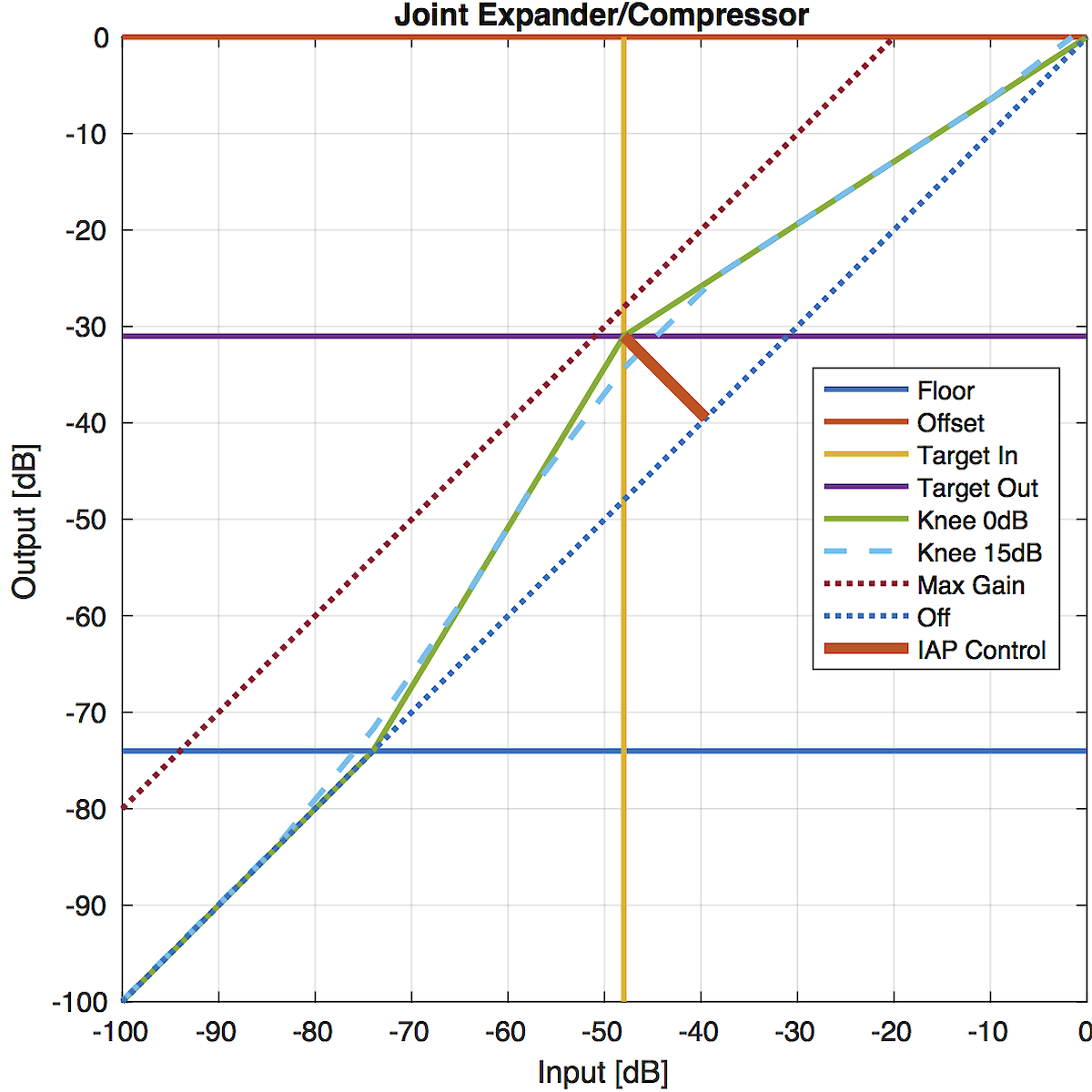
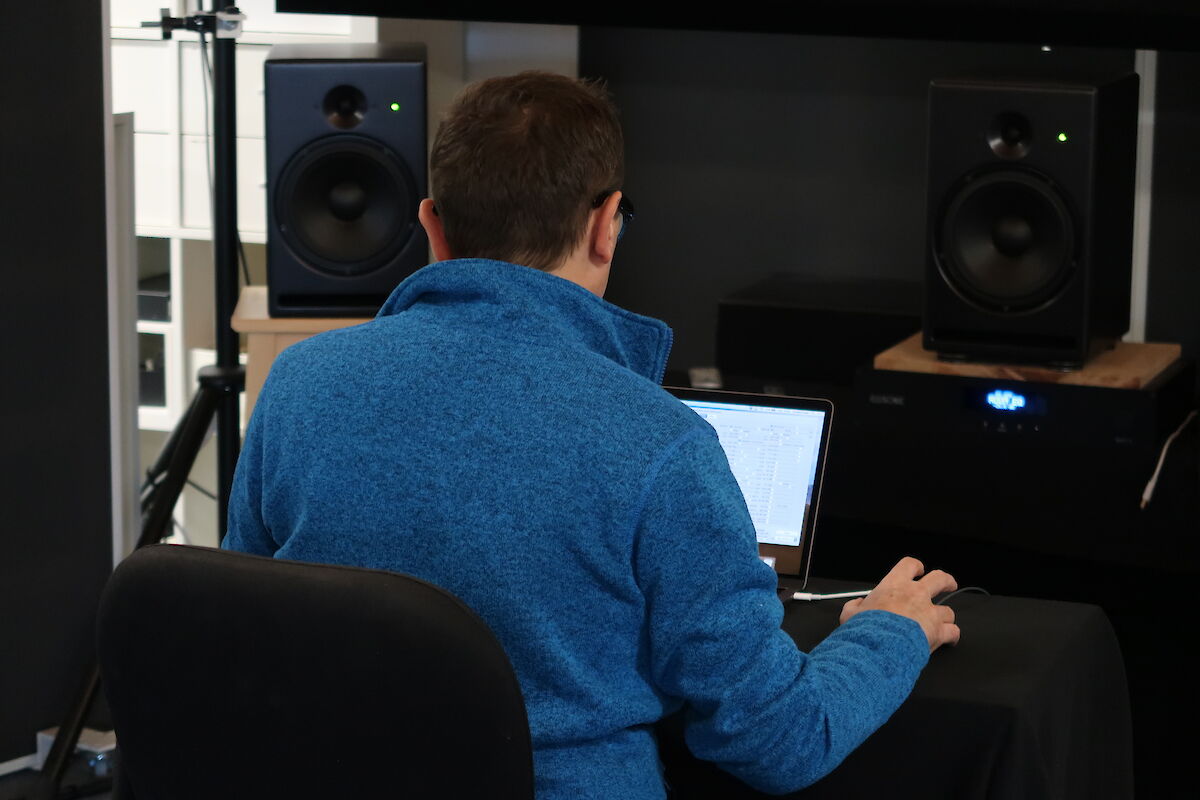
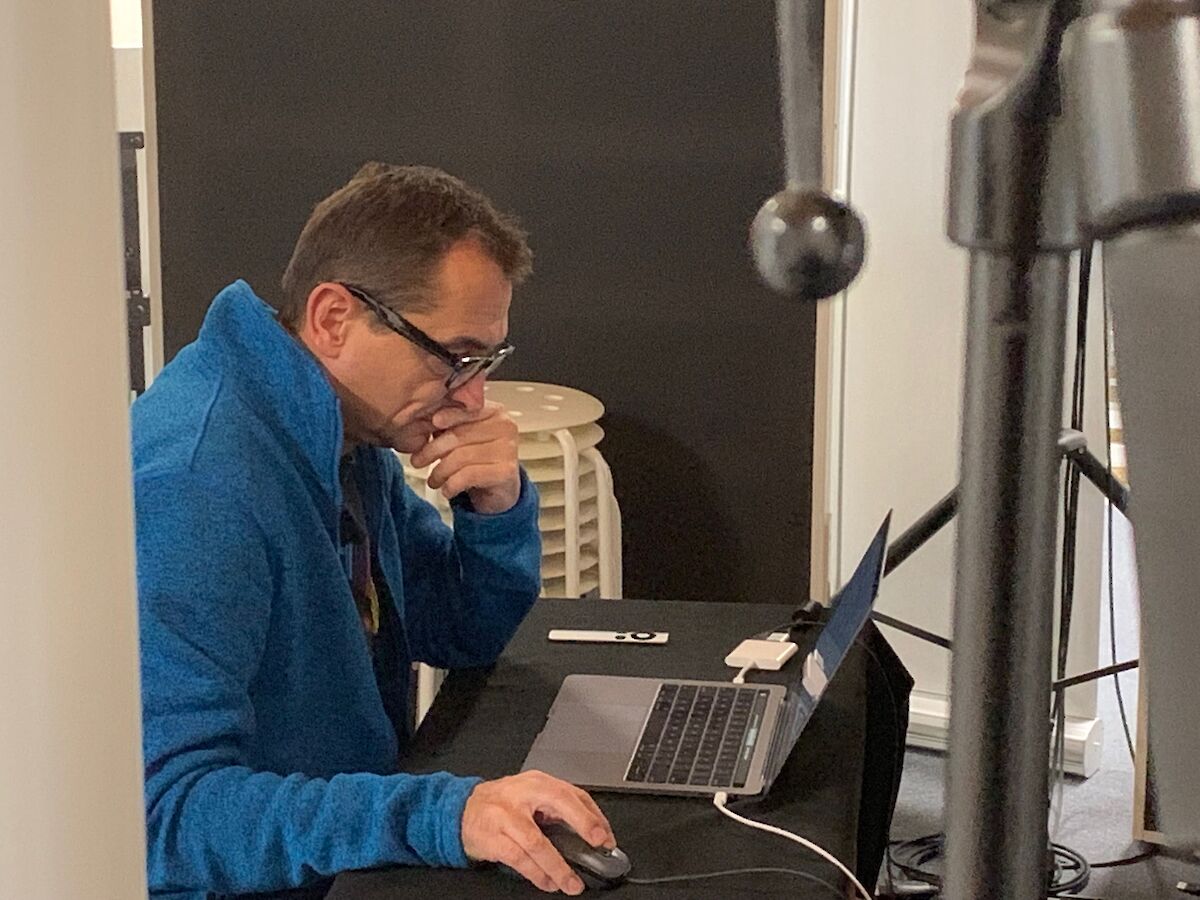
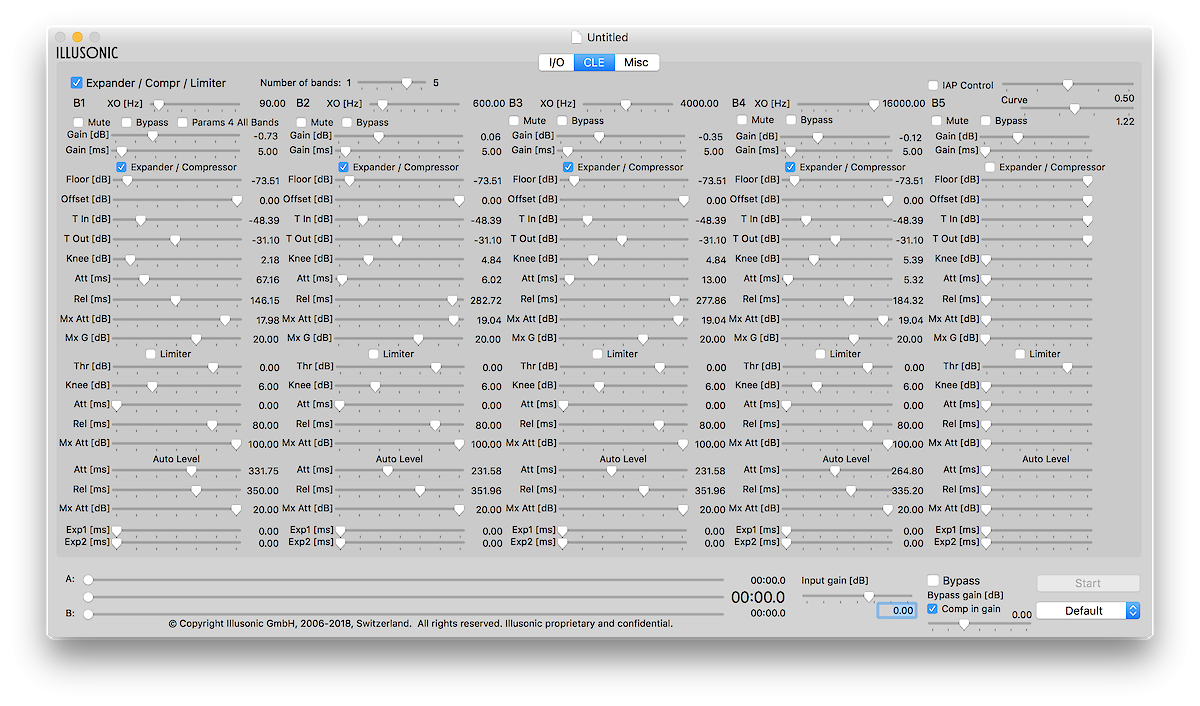
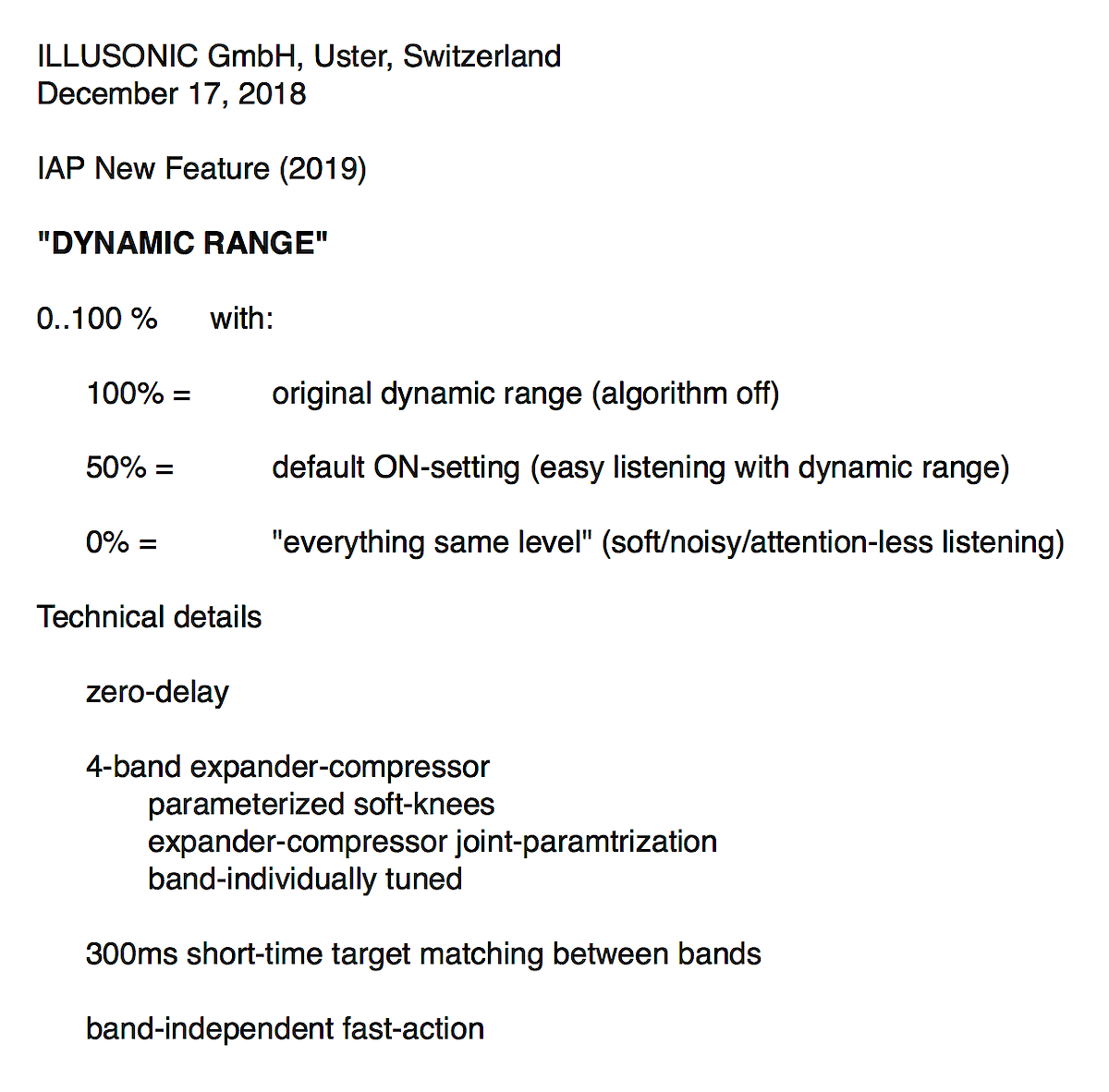
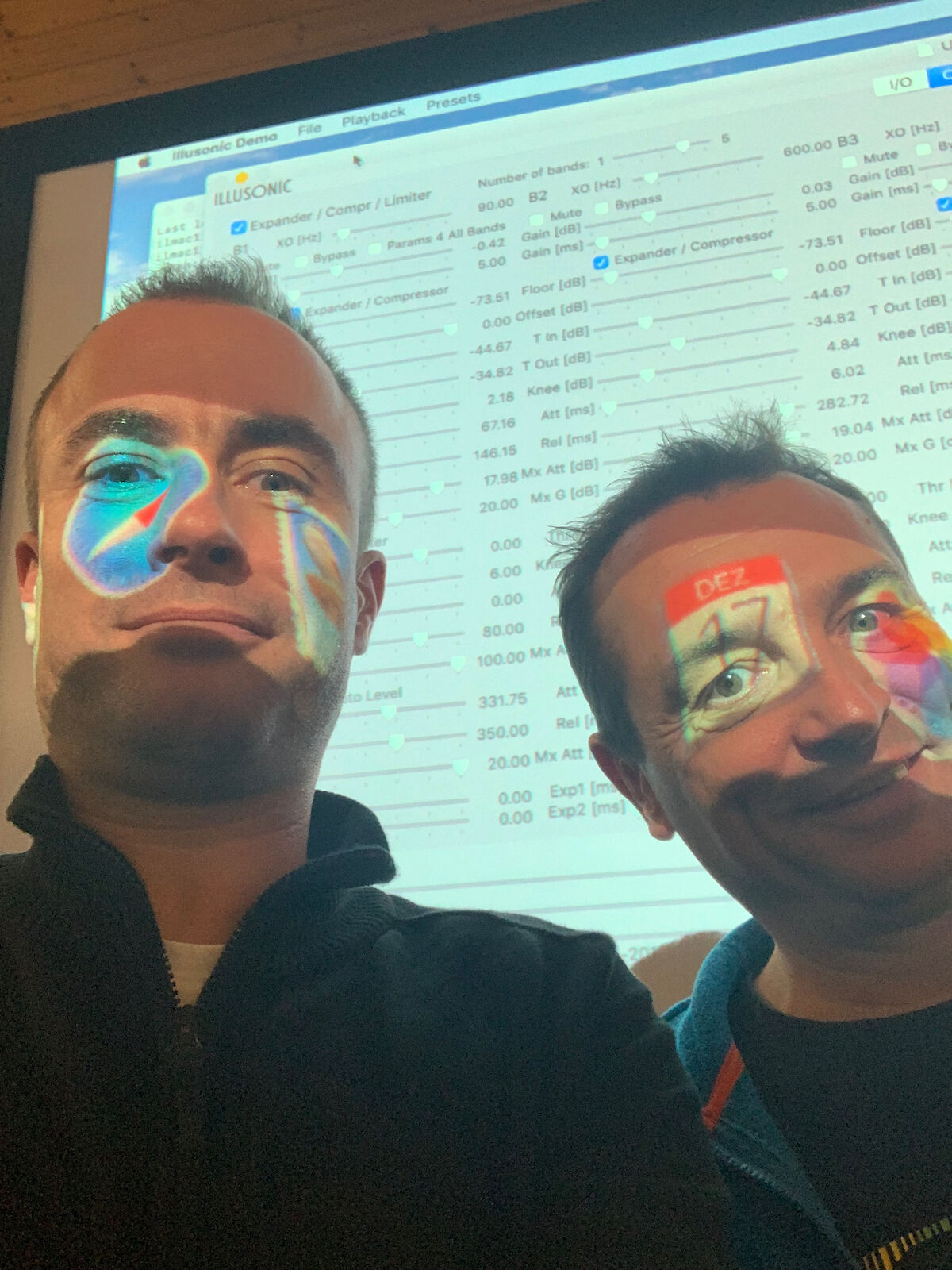
Finalizing Tuning of “Dynamic Range”.
During focused music listening - at relatively high volume, in a relatively quiet environment - a listener can enjoy the dynamics, the way it was intended by the recording producers. When music is being played softer than for what it was mixed and mastered for, large dynamic range requires extra listening effort on the softer parts of the music, causing fatigue or loss of focus. A noisy environment makes the issue even worse.
It would in a way be desirable that one could adjust the dynamic range of music to one’s liking and listening situation. This is exactly what Illusonic’s new Dynamic Range (DR) technology does. DR can be set between 0 and 100%, whereas 0% puts music to constant loudness, 50% reduces dynamic range by half, and 100% keeps the full dynamic range (= DR off).
Technically, DR is implemented as a multi-band expander-compressor, with individual parameters for each band. While each band acts individually to prevent overall gain modulation, the bands are jointly controlled, avoiding spectral changes and coloration.
Having recorded, mixed, and mastered more than 1000 music productions, Patrik Schwitter has the ideal experience giving input for and tuning DR. Prior to the tuning sessions, he gave input on what he would need and the specific multi-band decomposition.
Last week, we started tuning DR for its most difficult operating point, 0%, that is constant loudness music reproduction. This is the most difficult case in terms of artefacts and undesired changes to the music. Today Patrik Schwitter came for a second full day to tune DR. The parameters for the different bands were individualized to further optimize quality. Last but not least, the scale from 0 to 100% was optimized and its 50% point determined.
“I find it surprising, that there are no artefacts, very natural, like the music interpreted with less dynamics,” said Patrik Schwitter after his tuning sessions.
I am surprised, too! The goal was clear, but I was not sure how good the result would be. This algorithm is not an auto-gain-control type of volume adjustment, but kind of a dynamics-remastering. You do not hear volume follow, level is right there, right away.
A couple of anecdotes from the tuning session:
Patrik tested with Jazz music he recorded many years ago, where from his point of view now, he kept a bit too much dynamic range in the recording. A perfect test case, which worked well, like remastered with less dynamic range.
Another interesting case was “Nickelback” where pink noise type music suddenly transitions to solo singer and one hears the brickwall limiter of its original mastering follow with a delay. Interestingly, in this case DR reduced the pumping, it worked like inversely to the recording’s inherent limiter, making it sound more natural. (I don’t claim things sound always more natural with DR, this was an interesting particular observation).


November 9, 2018
As of today, all IAP models ship with HDMI 2.0b
Current IAP owners can upgrade their IAP to HDMI 2.0b for CHF 800.00 (Swiss Francs) plus shipping.
Inputs 1 and 2 are configured for HDMI 2.0b / HDCP 2.2.
Inputs 3 and 4 are configured for HDMI 1.4 / HDCP 1.4, because many legacy devices out there do not know how to handle HDCP 2.2.
Supported 4k formats:
>4K @ 24/25/30Hz, 4:4:4, 8bpc = 297MHz
>4K @ 24/25/30Hz, 4:2:2, 8/10/12bpc = 297MHz (used for HDR)
>4K @ 50/60Hz, 4:2:0, 8bpc = 297MHz
>4K @ 24/25/30Hz, 4:4:4, 10bpc = 371MHz (used for HDR)
>4K @ 50/60Hz, 4:2:0, 10bpc = 371MHz (used for HDR)
>4K @ 24/25/30Hz, 4:4:4, 12bpc = 445MHz (used for HDR)
>4K @ 50/60Hz, 4:2:0, 12bpc = 445MHz (used for HDR)
>4K @ 50/60Hz, 4:2:2, 8/10/12bpc = 594MHz (used for HDR)
>4K @ 50/60Hz, 4:4:4, 8bpc = 594MHz


November 1, 2018
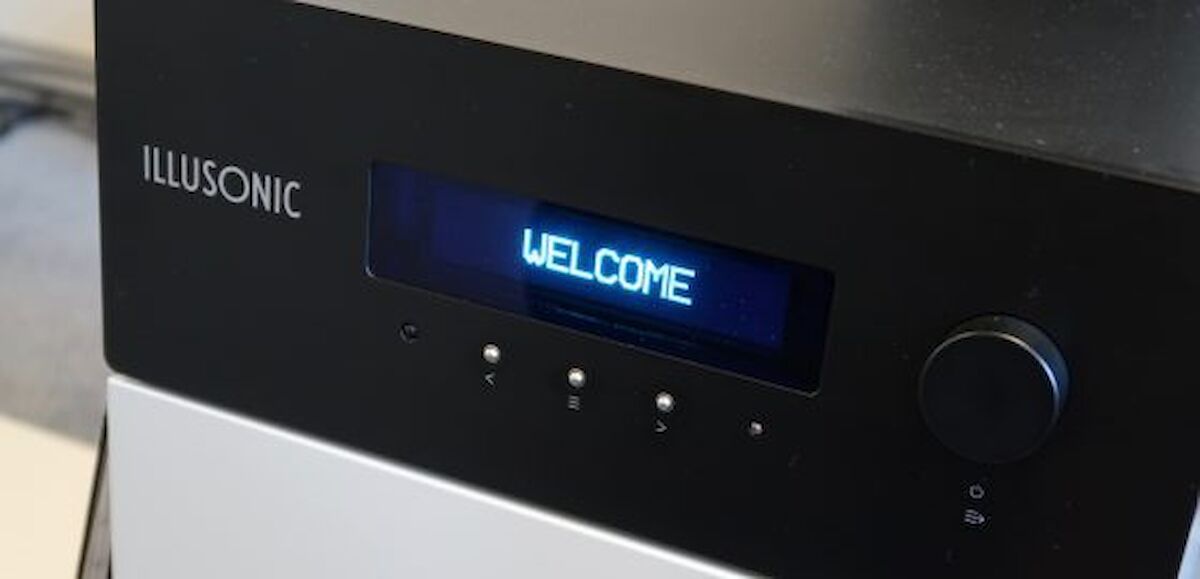
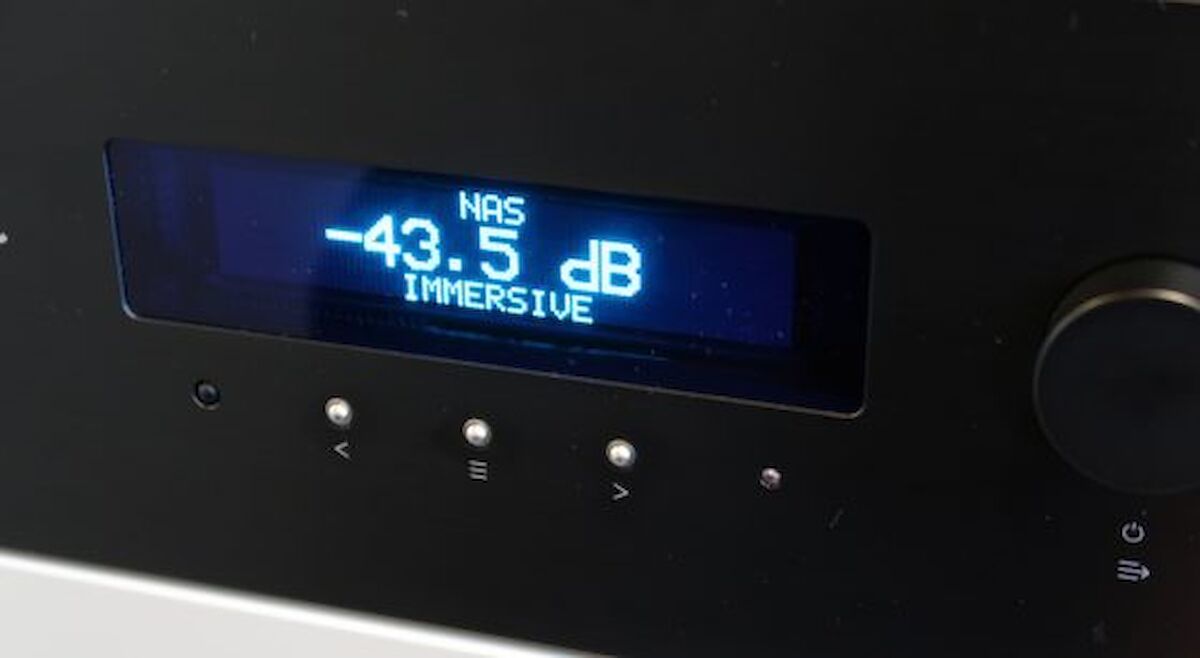
IAP Version 7.0 Firmware/Software Update
Main points:
– Reborn Feeling – improved menus, usage, new auto-zoom, new owner’s manual
– Another major step forward in Depth/Immersion
– Quality, Quality, Quality – many more improvements and extensions, see below
The update is available here.
Reborn Feeling
You instantly will notice usage refinements. Starting from the new minimalistic “Welcome” and “Bye” messages on IAP’s display.
Or, when you are far away from IAP, you are now able to read the display. Auto zoom adaptively magnifies the most important information on IAP’s display. For example, when you change volume, you see the current level large on the display.
The complexity of menus is now hidden for normal usage. You can now change sound presets without going to the sound presets menu, and always modify volume.
Ad hoc settings are now accessible by the touch of a button. Ad hoc settings allow you to adjust the sound temporarily. For example, change balance or subsonic filter.
The included all-new owner’s manual is fully up to date with IAP 7.0.
Sound: Immersive Meets Audiophile
In 2011, when we took on the challenge of designing IAP, we also took on the challenge to refine an upmix-like technology to an audiophile level. It is not that we had started from scratch. We were already several years on the market with several third party upmixers, including a market leading broadcast upmix processor (used by BBC, Sky, etc.).
But what a mix! Swiss Made audiophile hardware plus an unorthodox audio algorithm! No one has had the same problem statement as we did. And seven years later, we have achieved more than what we thought was possible. Illusonic Immersive by now sounds so amazing that we are not shy to show it before any audiophile audience. Usually people are puzzled. If we don’t tell them, they do not notice any effect, nor think it is not anymore stereo, just get great sound. Often people do not notice – until we switch to bypass – then a wonderful world collapses into a one-dimensional experience.
Quality, Quality, Quality
With this next major IAP update, we have again shown that we long-term support our audio processors. In the consumer domain, it is just normal that after a year or so, hardware is not supported anymore. In High End Audio, companies often lack enough software expertise to support customers well. Bugs are not fixed for years etc. For us it is normal to fix serious bugs within days. And about half of IAP’s features originally go back to customer requests (more coming…!).
Today the quality of a device is often largely determined by the quality of its software and firmware including dsp software. The audio quality of IAP hardware is at a level that other factors are the determining sources of limitation (amplifier noise, recording noise, loudspeaker non-linearities, room acoustics). The differentiating quality and potential lies in the firmware/software! Welcome to the world of IAP.
Detailed List of Additions and Improvements
Below is a detailed list of changes of this latest update, compared to the previous major update version (Summer 2018 Update).
Firmware IAP 2/4/8/16
– new Owner’s Manual for all IAP models
– major menu overhaul & auto-zoom to be visible at long distances
– new welcome and power off screens (“Welcome”, “Bye”)
– improved access to ad hoc settings (balance, dsp info, …)
– added support for ?|/& characters
– renamed orientation to “Mode” and moved to Immersive menu
– renamed sound settings “Immersive” to “Illusonic”
– multi-room: improved channel naming
– simplified menus (complex settings now only in IAP Configuration software)
– improved future backwards compatibility if characters are added/removed
– fixed a number of small bugs
– major revision of Depth & Immersion
– improved LR balance, now applied on stereo input (as opposed to output)
– fixed debug mode, has not worked for a while…
– added new club, hall, stadium modes (orientation)
– major bass management extensions (more flexible crossovers)
– when center strength = 0, set center diffuse sound to off (so center is 100% silent)
– added dsp image and copy protection for IAP 16 mk2
– modified power-on timing for new gen 2 main PCBs and DAC boards
– support of mk2 main board features (phono options, dig out)
– changed DSP output routing to match native DAC board (IAP 8, IAP 16 mk2) channel order, this also fixed IAP 16 mk2 dig out
IAP Configuration Software
-rename: IAP Controller => IAP Configuration !
-OSX: switched from i386 to universal (32/64 bit)
-OSX: now developer-sign application
-renamed IAP Controller to IAP Configuration
-added new bass management crossover options
-added support for ?|/& characters
-replaced EQ icons with popup menu
-added new club, hall, stadium modes (orientation)
-renamed sound settings “Immersive” to “Illusonic”
-bug fix: revert IAP now also reverts loudspeaker setup
-multi-room: improved channel naming
-added new phono options for IAP 16 mk2
IAP Calibration Software
-OSX: switched from i386 to universal (32/64 bit)
-OSX: now developer-sign application
-added new bass management crossover options
-active crossover optimisation workflow improvement
-new option to apply LP/HP filters (also when eq is off)
-added high pass option to time-domain plot (in addition to lp, bp)
-fixed issue with channel linking for mute/unmute
-improved positioning of eq curves, previously if max eq gain was more than 6dB it would go out of the figure, no it adapts automatically its vertical position
-improved absolute impulse response alignment
-multi-sub-combination time plot improvement
-now there are three channel linking configurations (before: 1)
-when no IAP is connected when launching IAP Calibration, it will as opposed to read the loudspeaker setup from IAP, ask the user to specify it
-bug-fix: when loudspeaker gains and low-cuts are used during measurement, gains impulse responses could be wrong
-bug-fix: eq on gain was not correctly written to export config .iap file
-bug-fix: some crossover related functions did not always work properly (functions which have if lp or hp, then…), this could also result in that a crossover would not be disabled during measurement
-bug-fix: spk size did not properly real-time sync with IAP
-various small improvements and bug-fixes


June 6, 2018
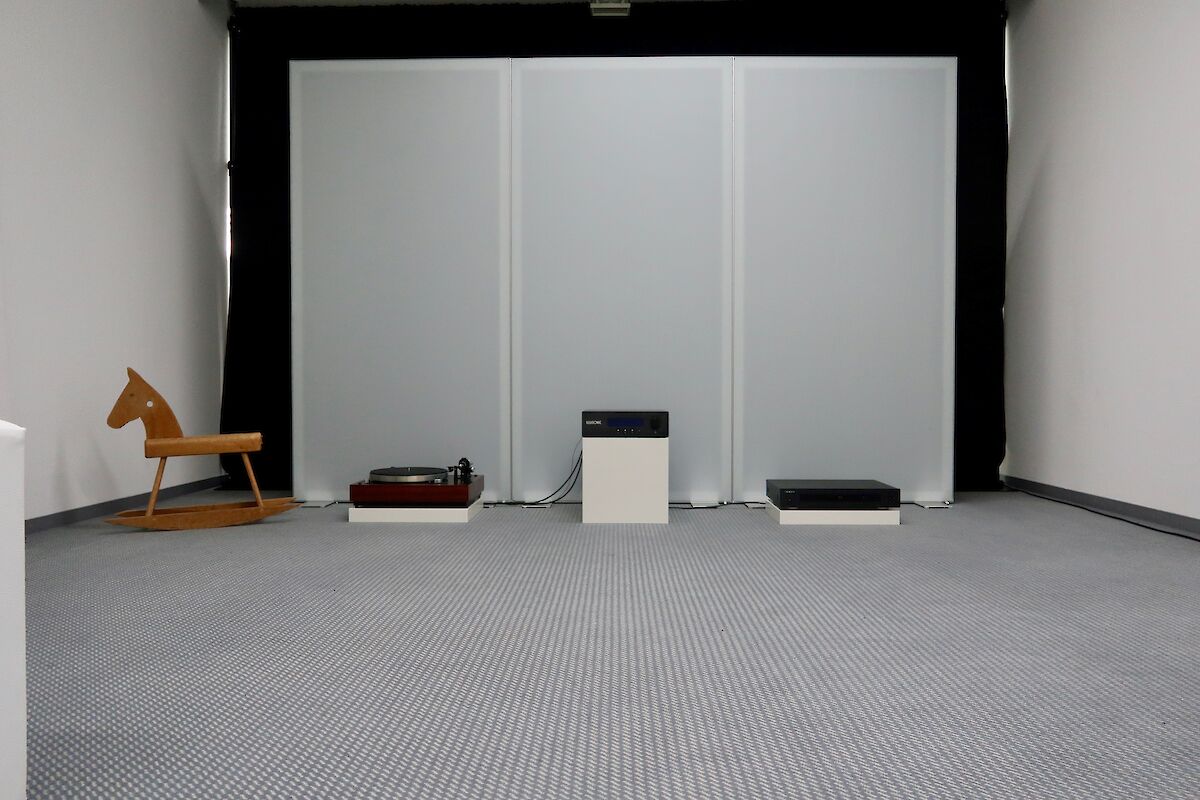
IAP Version 6.1 Firmware/Software Update features a breakthrough new function: CLARITY
In a way, it acts like adding absorbers and bass traps to your room. A more in-depth discussion is below.
The Summer 2018 IAP Firmware/Software updates all IAP models to the latest state. Below are highlights and a detailed list of changes.
The update is available here.
Shown with Great Success at High End Munich
We showed a pre-release version if IAP 6.1 at High End Munich a few weeks ago.
Hiding audio equipment behind a sound transparent wall, people came to our room, more to listen, less to look.
We have never gotten as positive feedback on the sound on a show before. We have had surprisingly transparent sound, people noticed that by listening. No need to talk about it.
Clarity
What is Clarity?
Clarity can be fine tuned from off to maximum. When you enable clarity and increase it, you’ll hear this:
there seems to be less interaction of the sound with the room
bass becomes more defined
a bit like if you’d use absorbers and bass traps
sound is more intimate, instruments are more in your room (versus playback of instruments recorded in another room)
How Does Clarity Work?
Obviously, what Clarity does perceptually, is physically impossible! We can not modify a sound signal prior to playback such that the room acts as if it would have more absorbers and bass traps. In the following, different lines of thoughts explain Clarity:
1
Believe it or not, but good musicians will adapt to the acoustic. For example, if you have an acoustic bass player in a bass-resonating room, he plays differently, to make it sound nicer under the given acoustic conditions. This also works for other acoustic instruments, such a violins.
From this perspective, one way of viewing Clarity, is, that it slightly modifies the music to sound better under too reverberant conditions. Strength of Clarity can be controlled, i.e. the degree to which the music is modified is adapted to the user’s acoustic conditions.
2
Clarity works differently for bass and higher frequencies. Due to multiband limiting, music has often a continuously rumbling bass. And it becomes worse, if additionally the listening room has bass resonances. Clarity also restores more dynamic range in the bass.
3
Different sound engineers do their mixes differently. But there is not a single mix which is optimal for all acoustic conditions. For example, if you have a reverberant room and if you are far away from the loudspeakers, a dry mix will do better than a reverberant mix.
From this perspective, if your room is too reverberant, or if you are far away from the loudspeakers, Clarity will modify the mix such that it works better under these conditions. If the given mix is already dry, Clarity will do nothing.
4
Well known in virtual acoustics, mixes should be done from dry sources, because when you apply a reverb on a source which has already reverb, the result will be sub-optimal. Clarity counteracts two cases of “reverb-cascade” problem: reverb in the mix and your room’s reverb, reverb in the mix and Illusonic Depth/Immersion.
3-Stage Optimisation
Story
It’s Simple!
While it takes skills and experience to optimise a room, we have a simple solution:
1
It is easy to measure your system and room with IAP Calibration software.
2
Send us the data plus documentation.
3
We’ll optimise Calibration, Clarity, and Immersion for you.
We are open. If you love to play with things, you can. You have the same software as we do.
Calibration, Clarity, and Immersive
IAP Calibration software allows to measure a sound system multi-point and to optimise it linearly. The resulting room eq (and if applicable crossovers) reduce bass resonances and undesired coloration of sound.
In rooms without extensive acoustic treatment, after Calibration, things are better, but still not ideal. Clarity allows you to go a step further.
Depth/Immersion (short: “Immersion”) does the opposite. It adds again more room sound, but without adding coloration. Like this, sound can be made more spacious and enveloping.
Detailed List of Additions and Improvements
Below is a detailed list of changes of this latest update, compared to the previous major update version (Spring 2018 Update).
Firmware IAP 2/4/8/16
new function “Clarity”
improved dereverb before depth/immersion
improved depth (cleaner, yet wider sounding, better on reverberant voices)
remove immersive dry center option (for now just hidden, always off)
retuned depth/immersion scale to improve 50% default
IAP Controller Software
added Clarity to Immersive Settings
fixed some dialog boxes not showing correctly under Win 10
remove (hide for now) dry center function, always off now
IAP Calibration Software
added support for Clarity
fixed some dialog boxes not showing correctly under Win 10


June 1, 2018
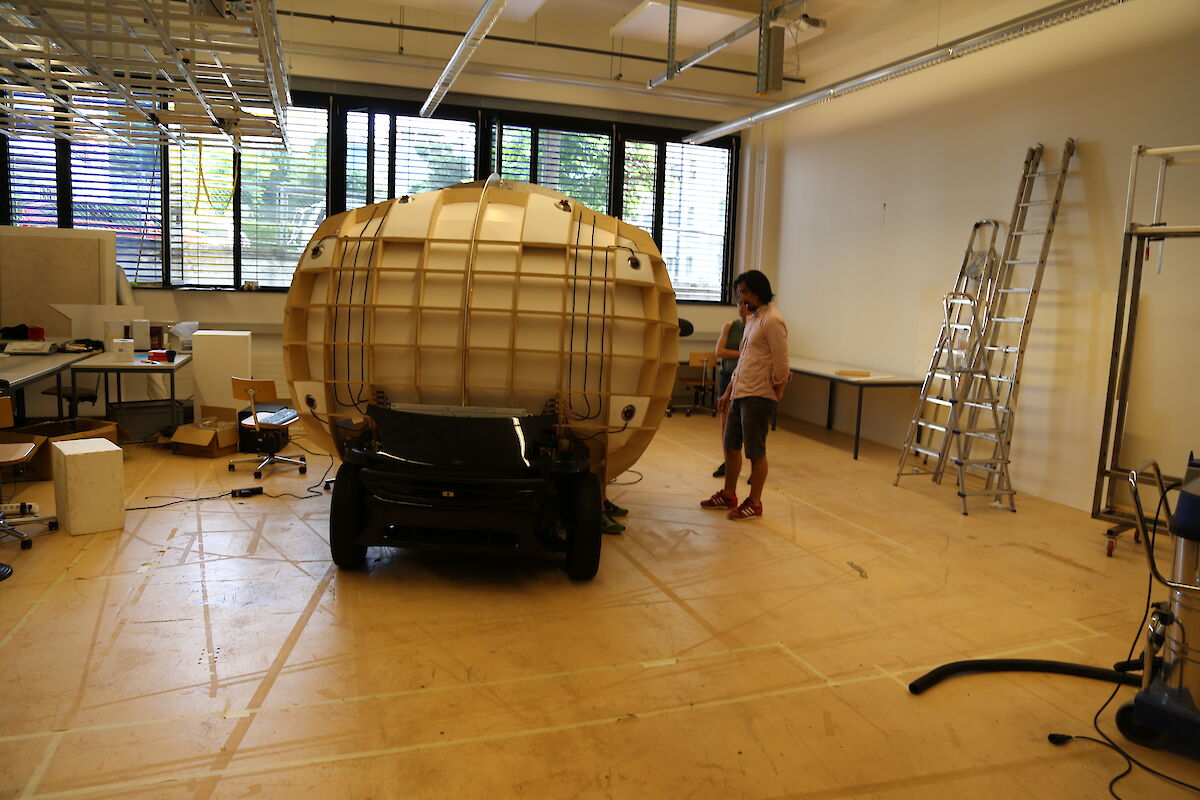
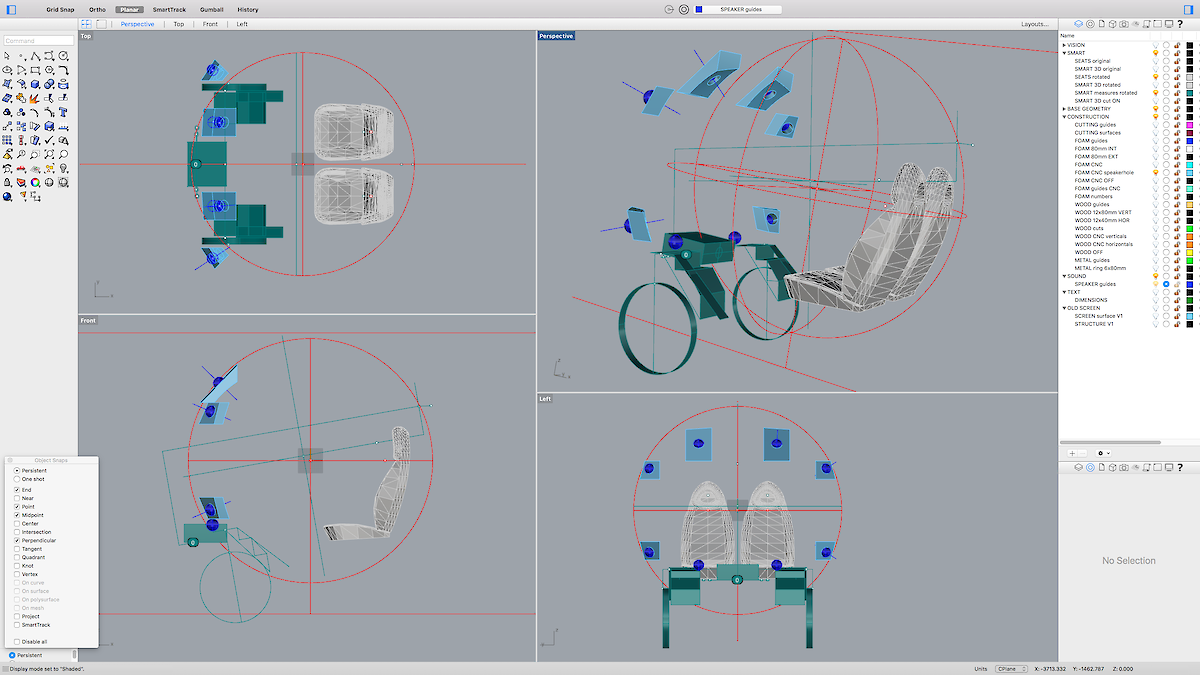
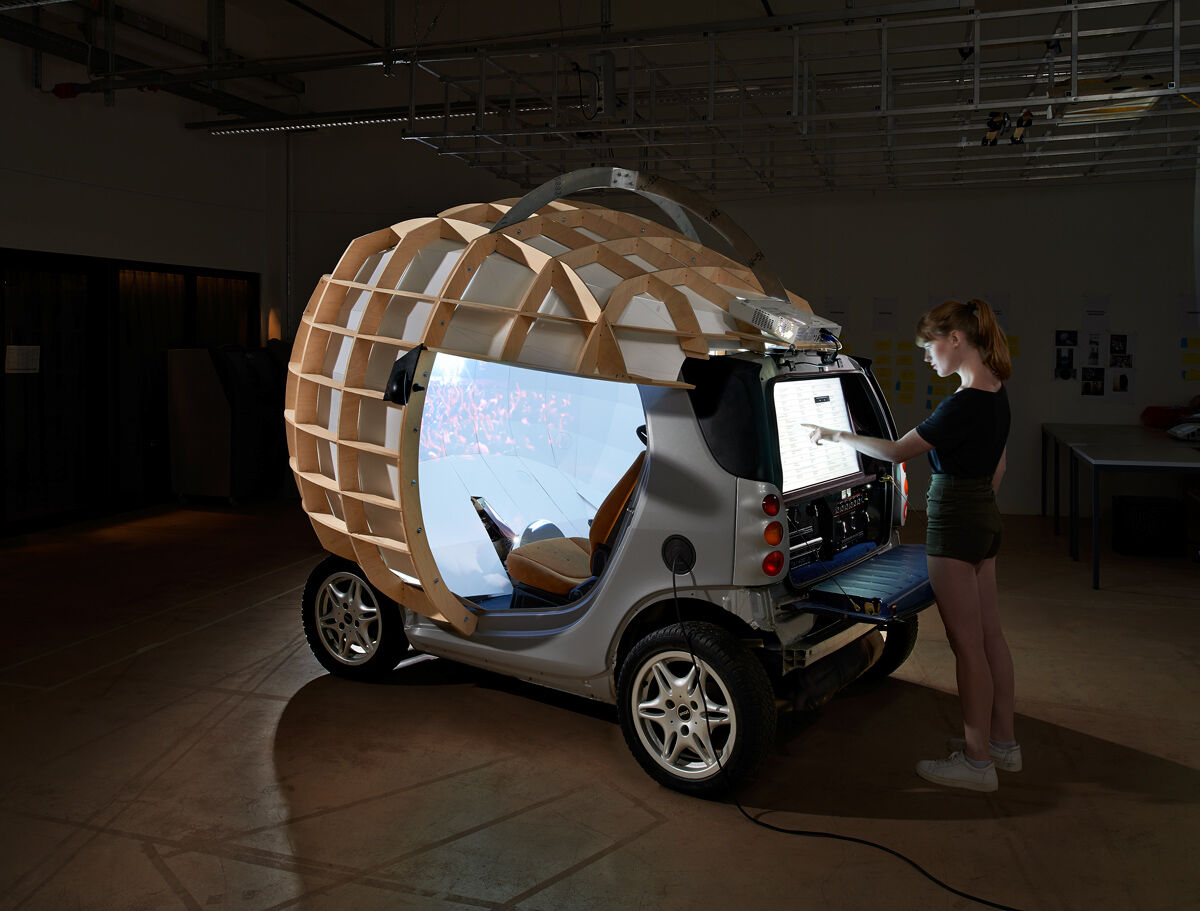
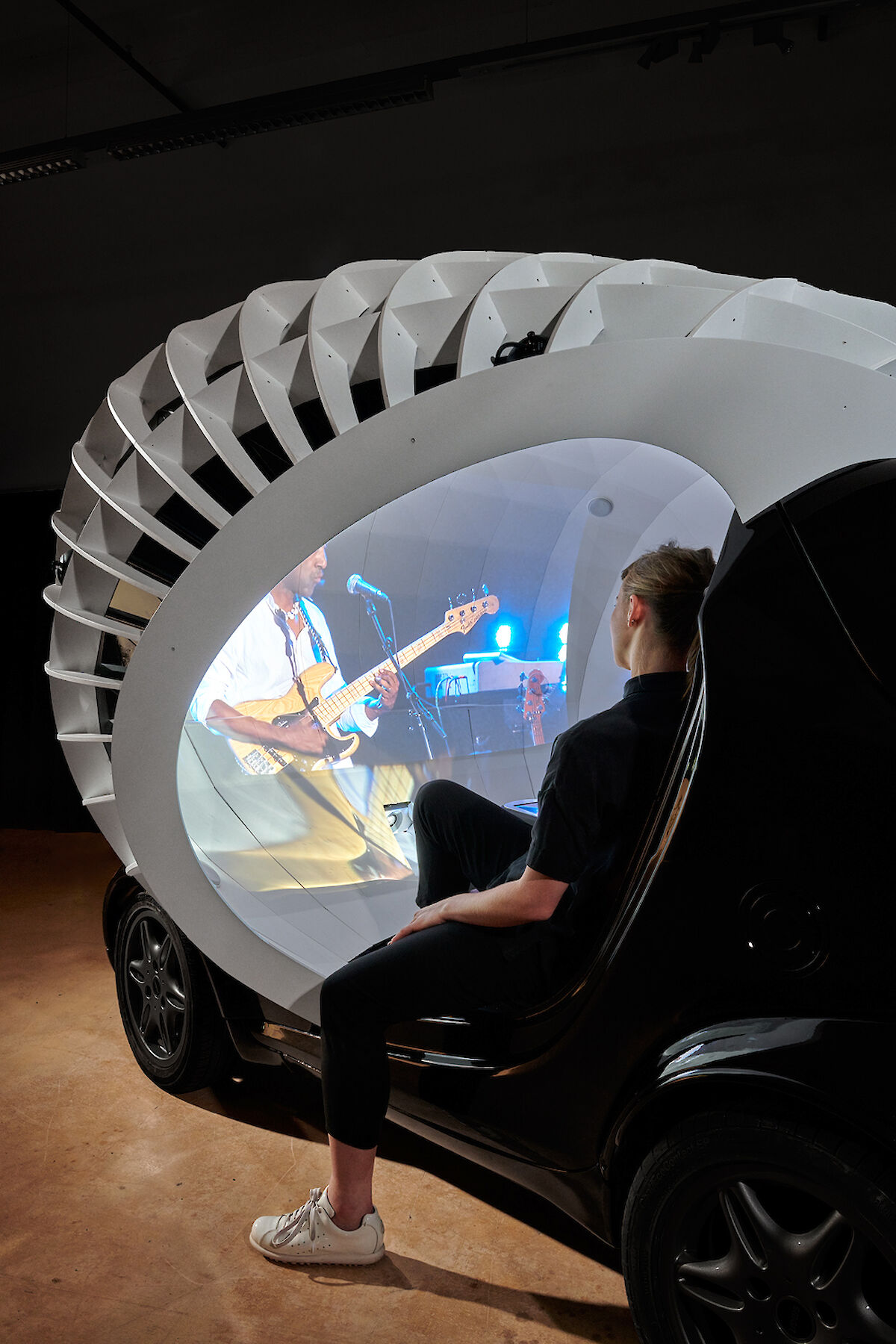
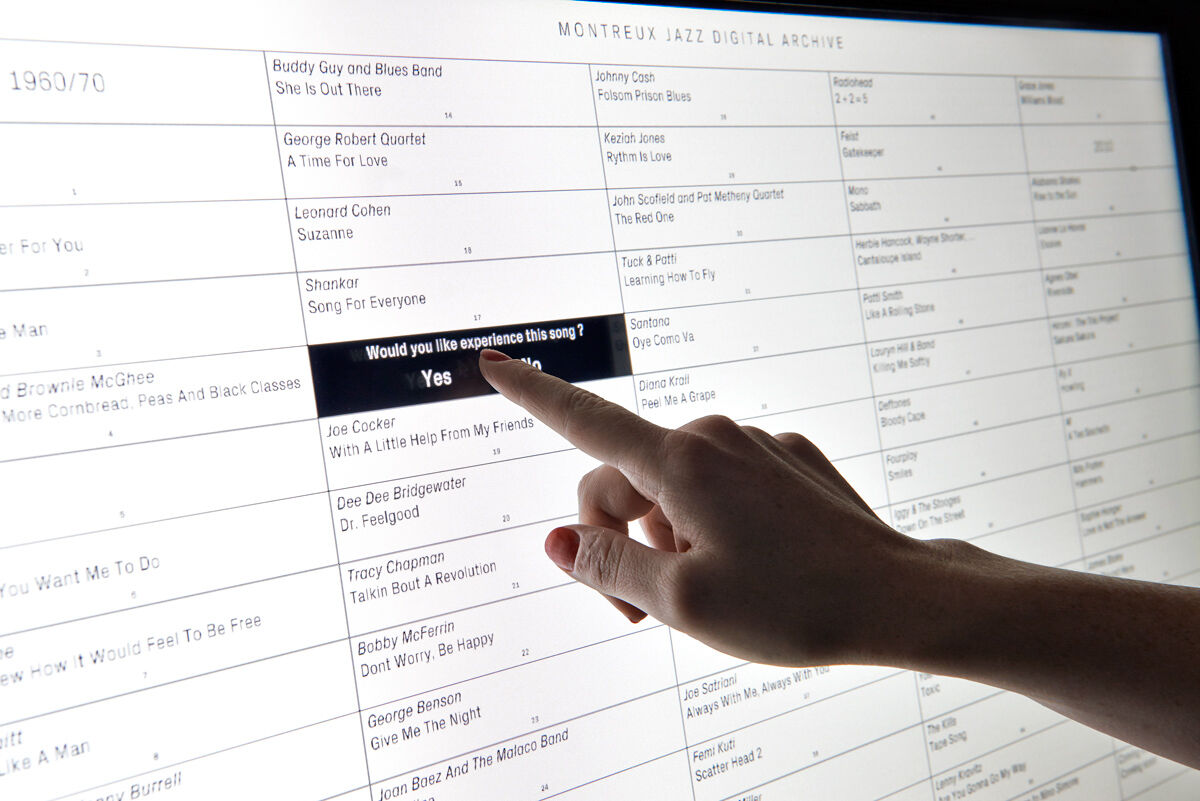
Montreux Jazz compact car with built-in IAP 16
In collaboration with ECAL Lausanne art school, Illusonic implemeneted an 12.1 immersive sound system within a Montreux Jazz Archive themed compact car called “Nina”. The result is shown at this year’s Montreux Jazz festival.


May 3, 2018
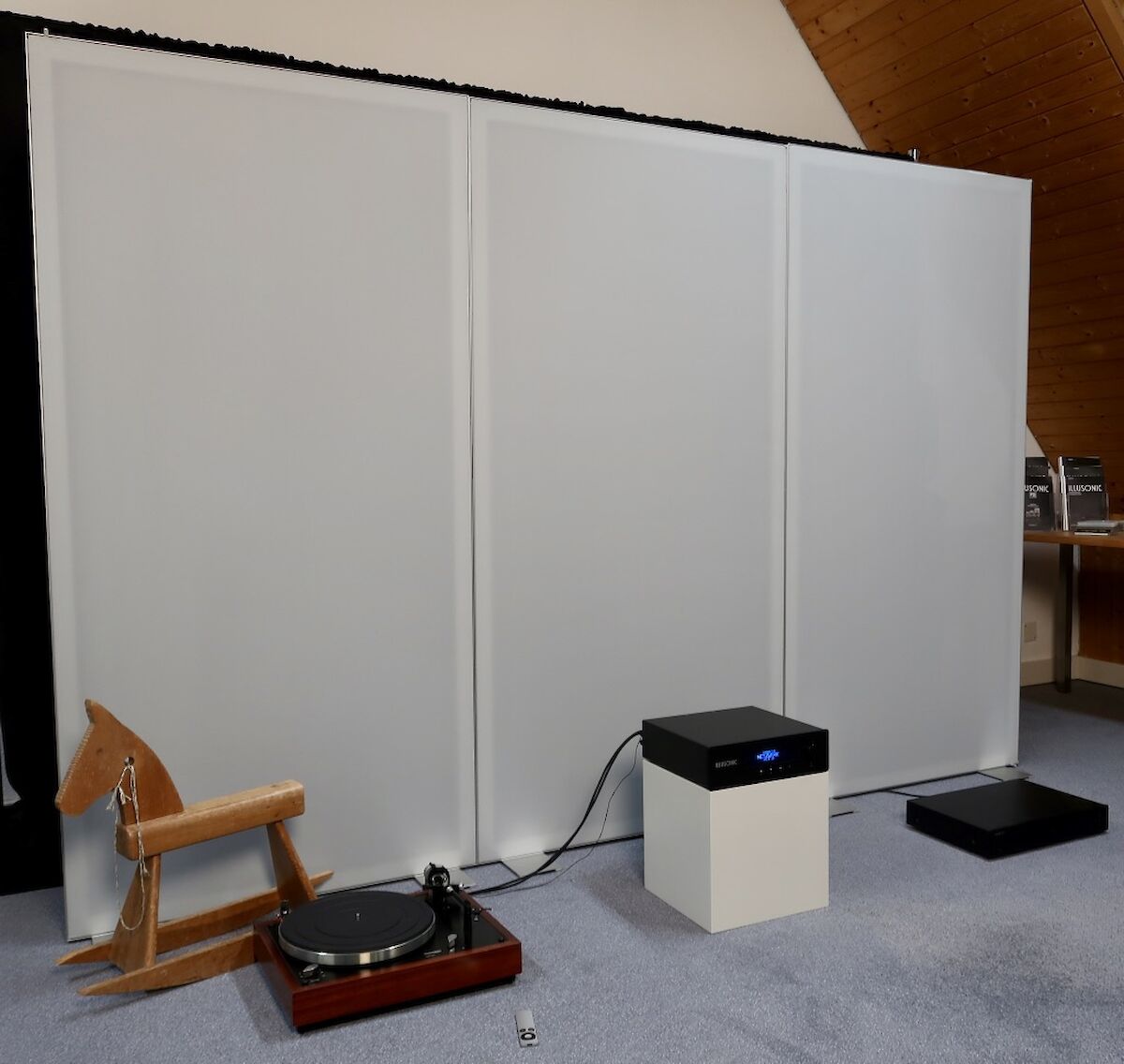
It is Just About Sound. in Room F231B Atrium 4.2
This year, Illusonic will again exhibit at the worlds large Hi-Fi exhibition, High End Munich 2018. We are just about sound and will again feature a sound transparent wall STW to hide the audio equipment. Just listen, it’s just about sound! You can look behind the STW, to see which modern precision audio components enable the amazing sound. Optimised by an Illusonic Audio Processor IAP.
Timeless Quality
A lot of RD went into IAP since last year. IAP is the audio processor evolving constantly, without a need for hardware upgrade. Our first 2011 model gets still, and will for long, get new firmware software updates. Our goal ist to build timeless audio processors, timeless Preamp-Processor-DACs, with the most innovative and best signal processing inside.
For Whatever Scenario
The various models IAP 2, IAP 4, IAP 8, IAP 16) cover any imaginable application scenario, from audiophile 2-channel stereo, to active cross-overs, to subwoofers, to multi-channel and immersive audio, and multiroom systems. Illusonic’s service optimizes any of these scenarios in an unprecedented way.

